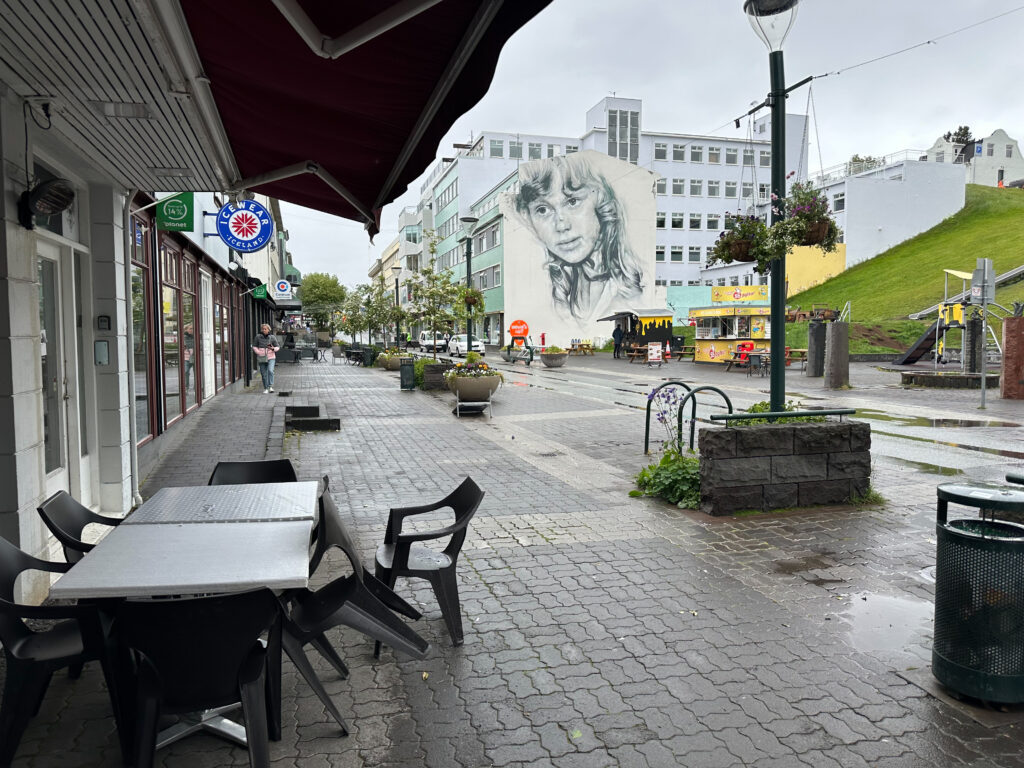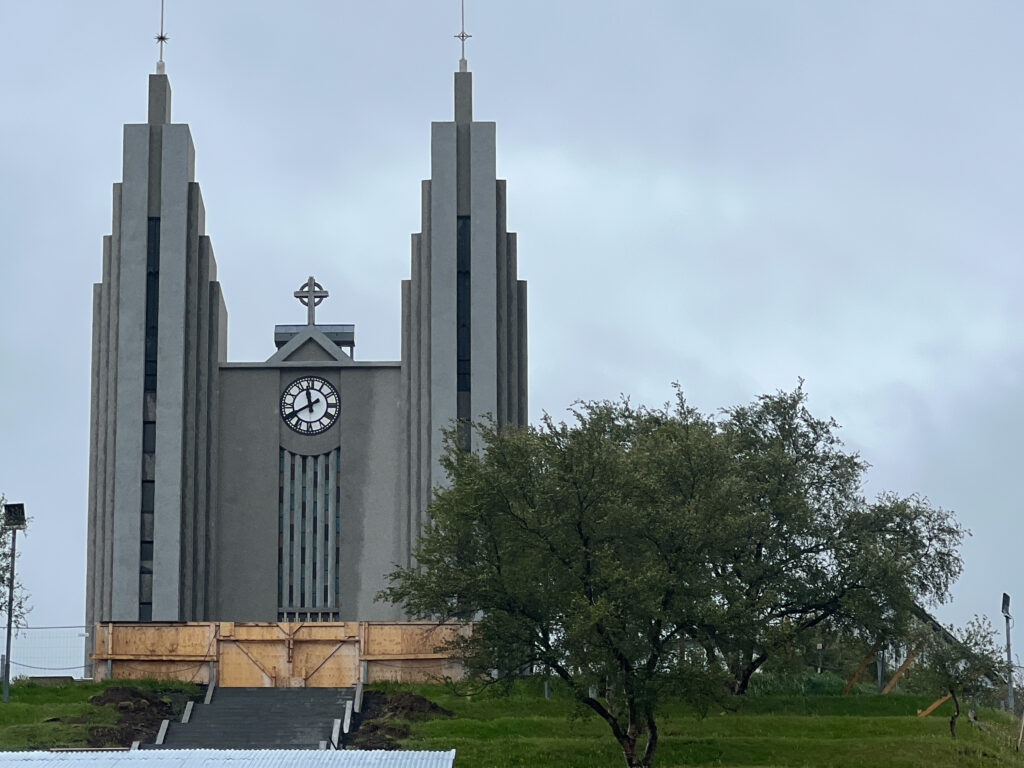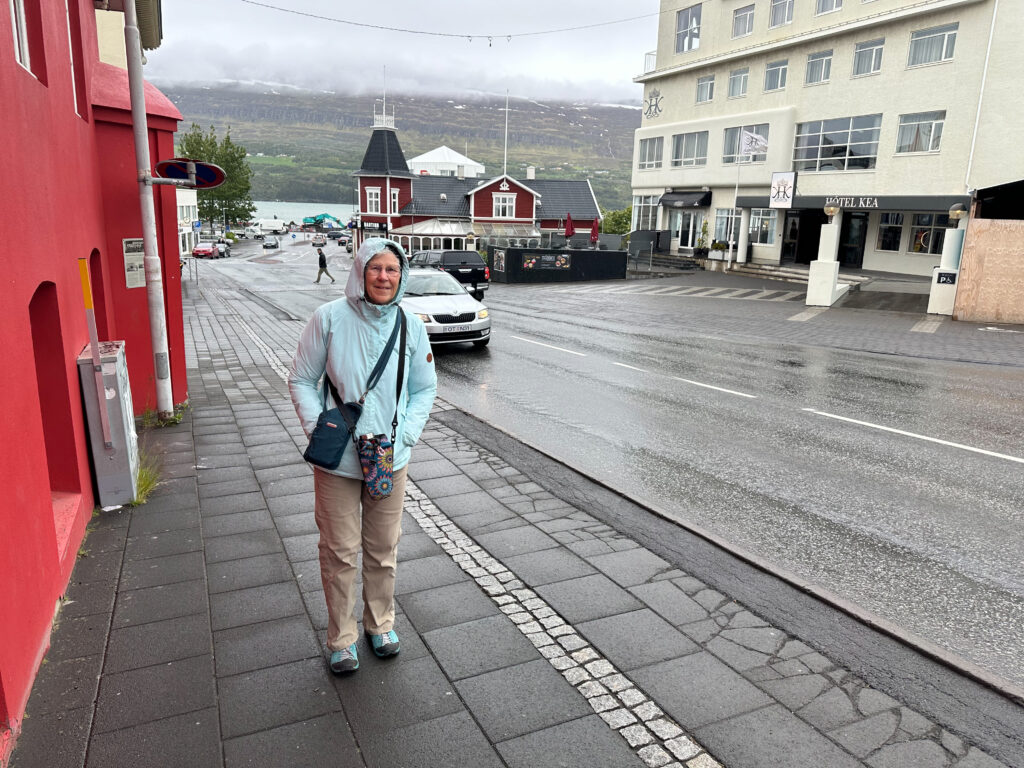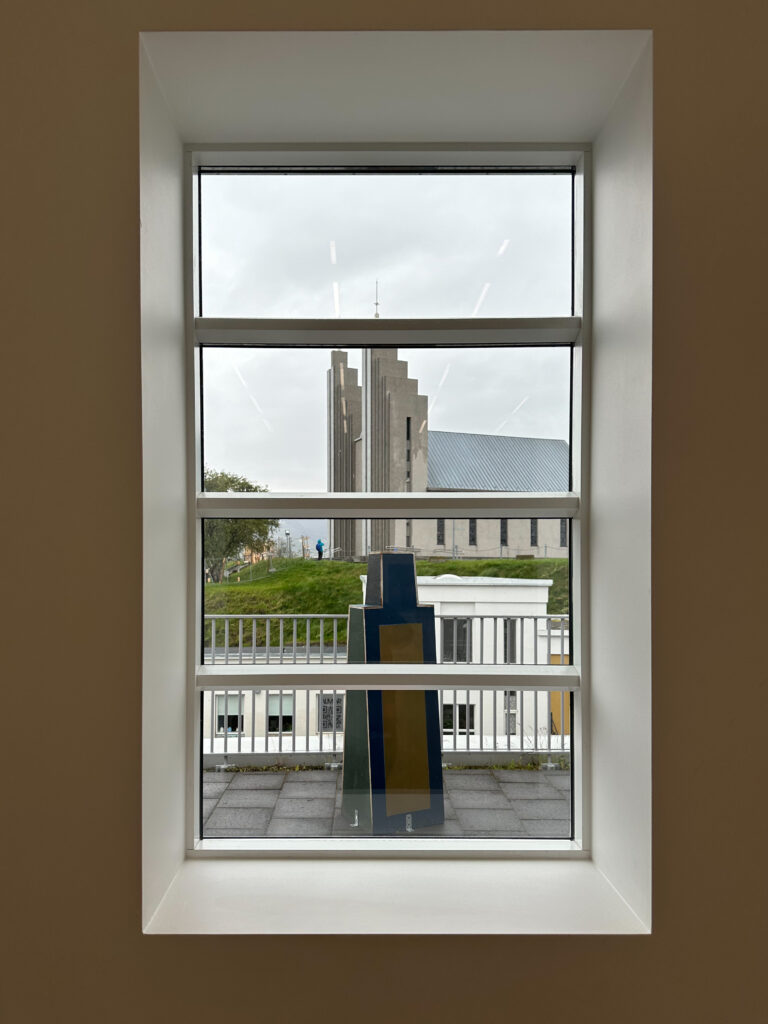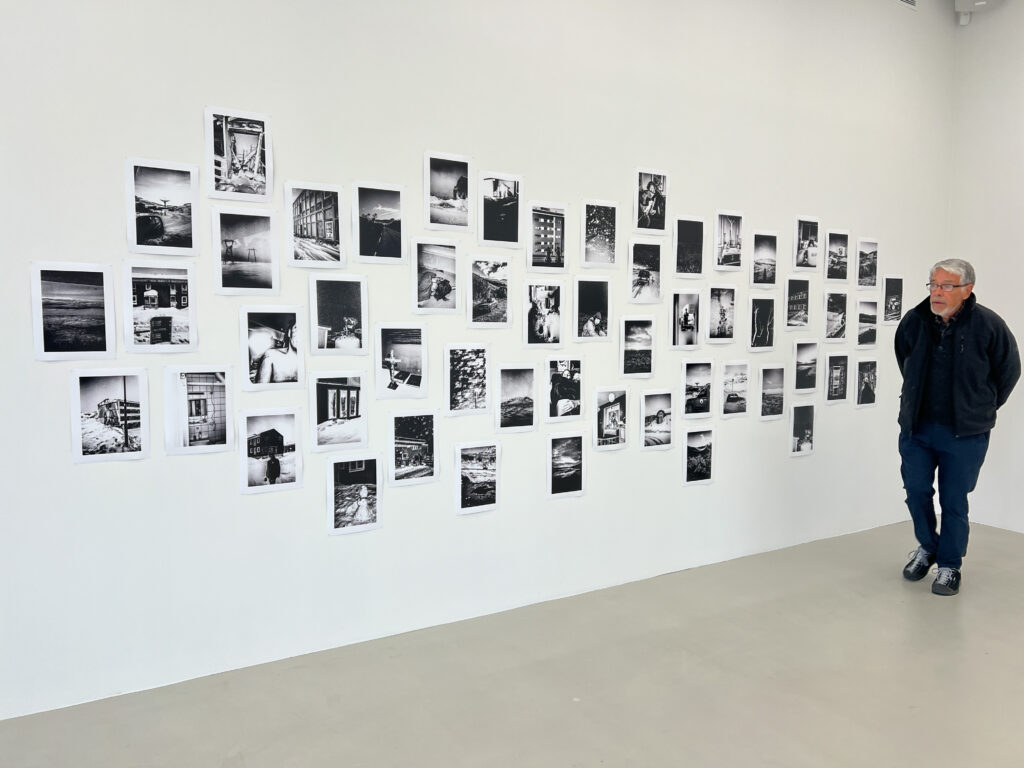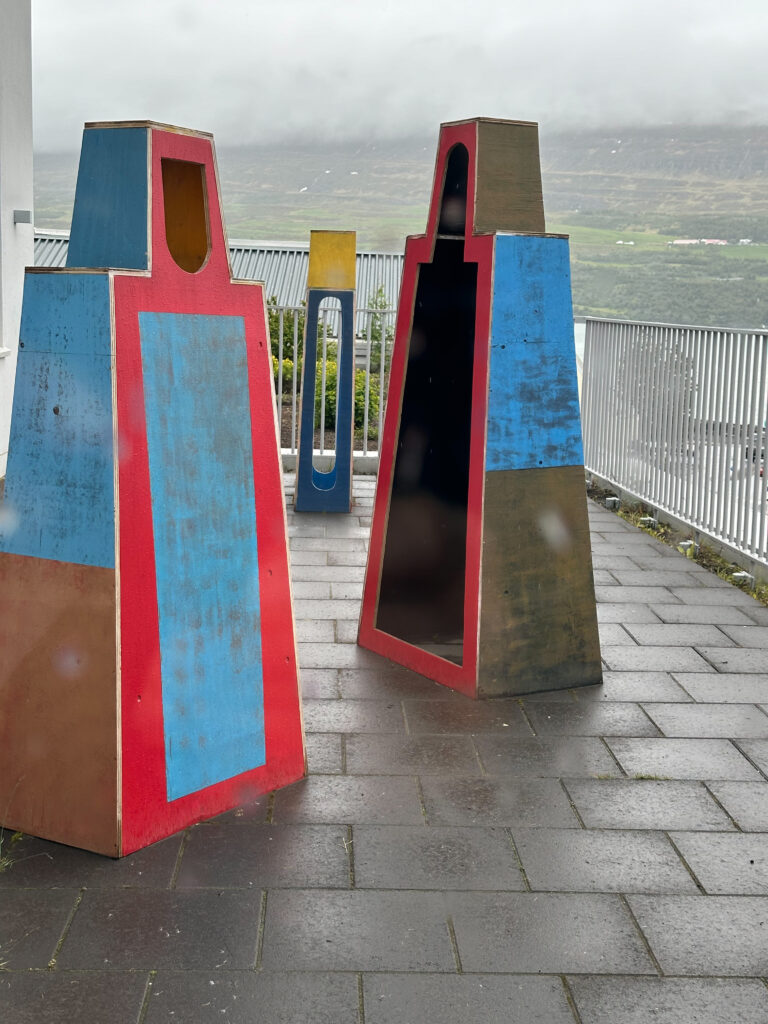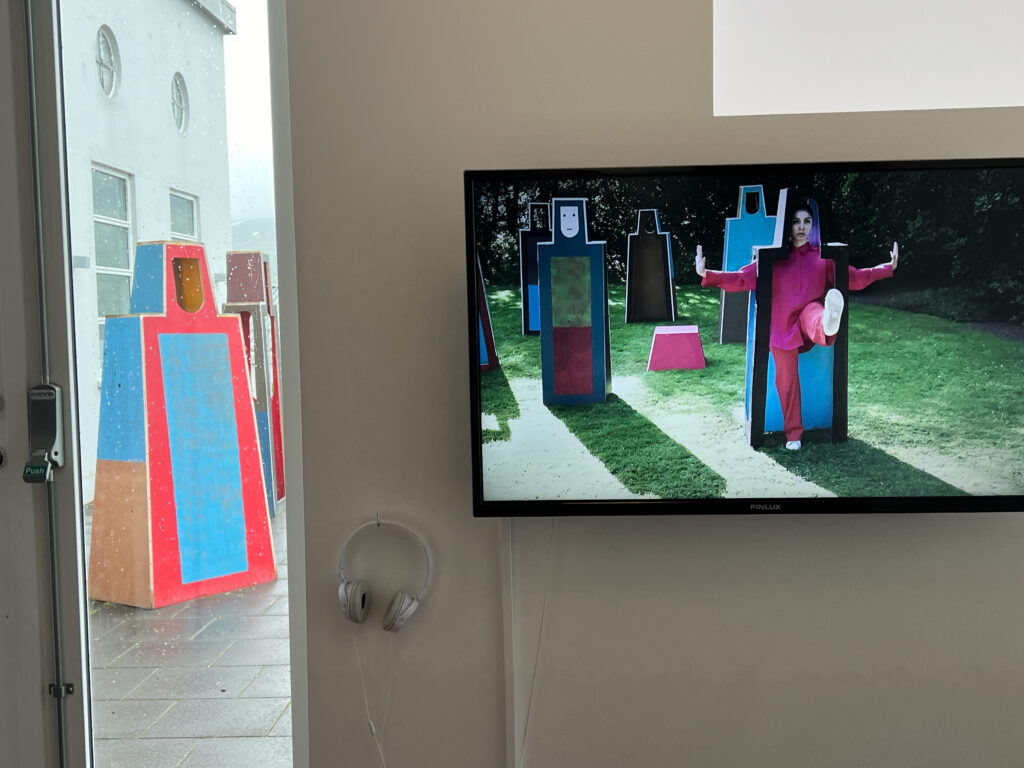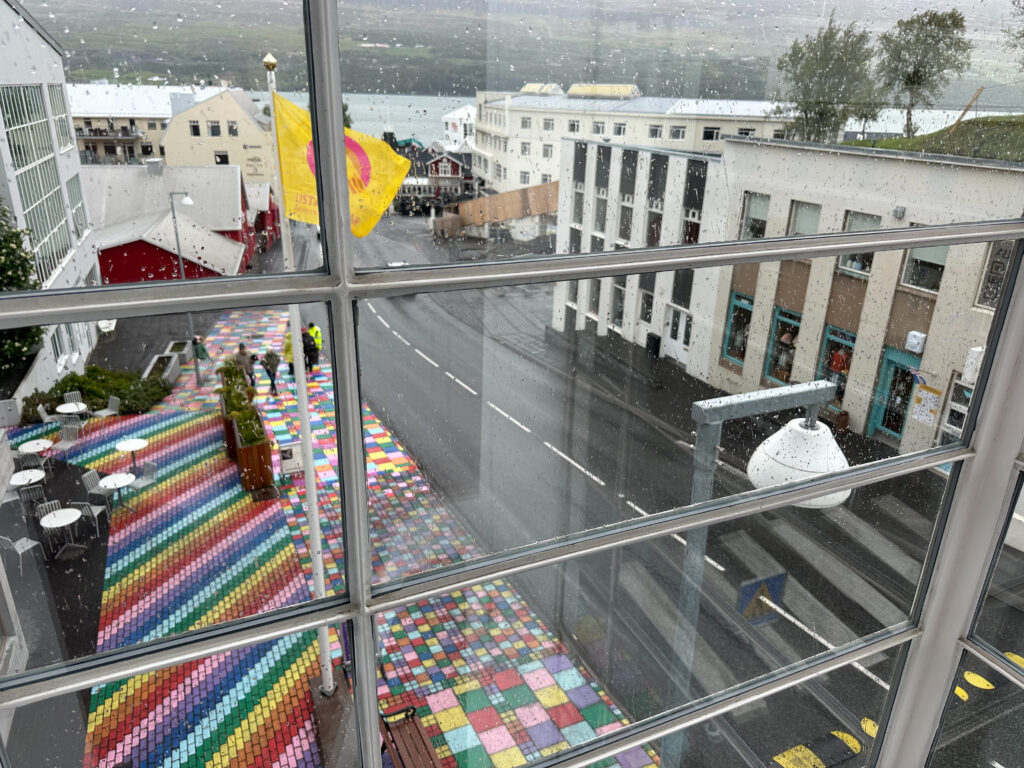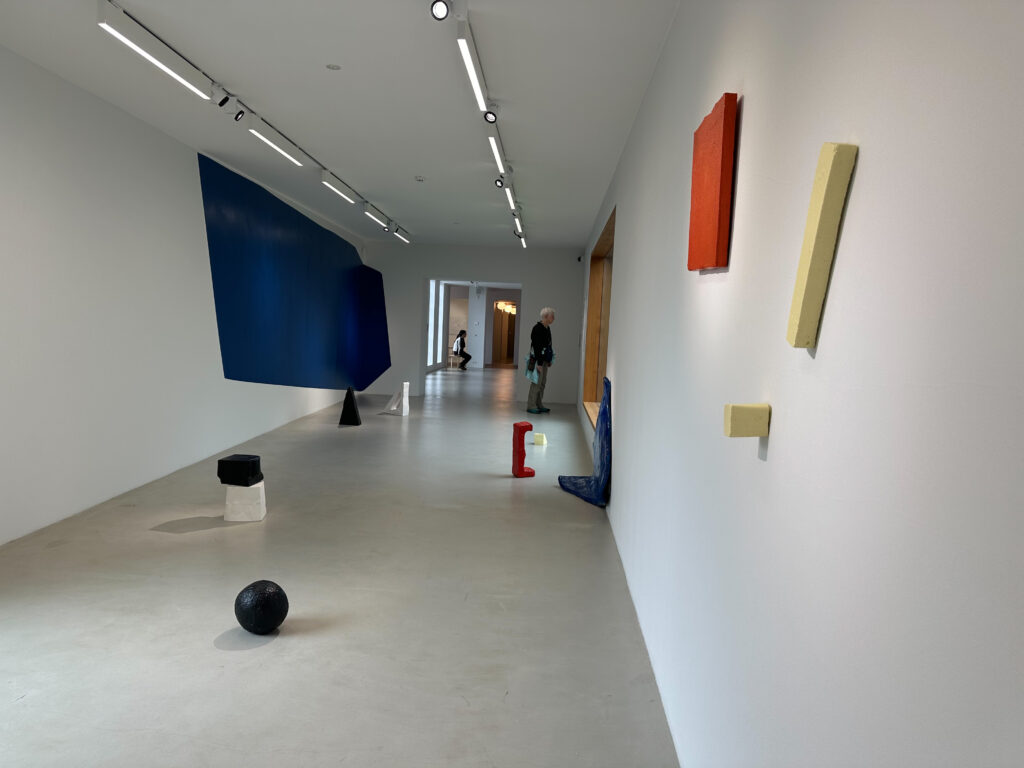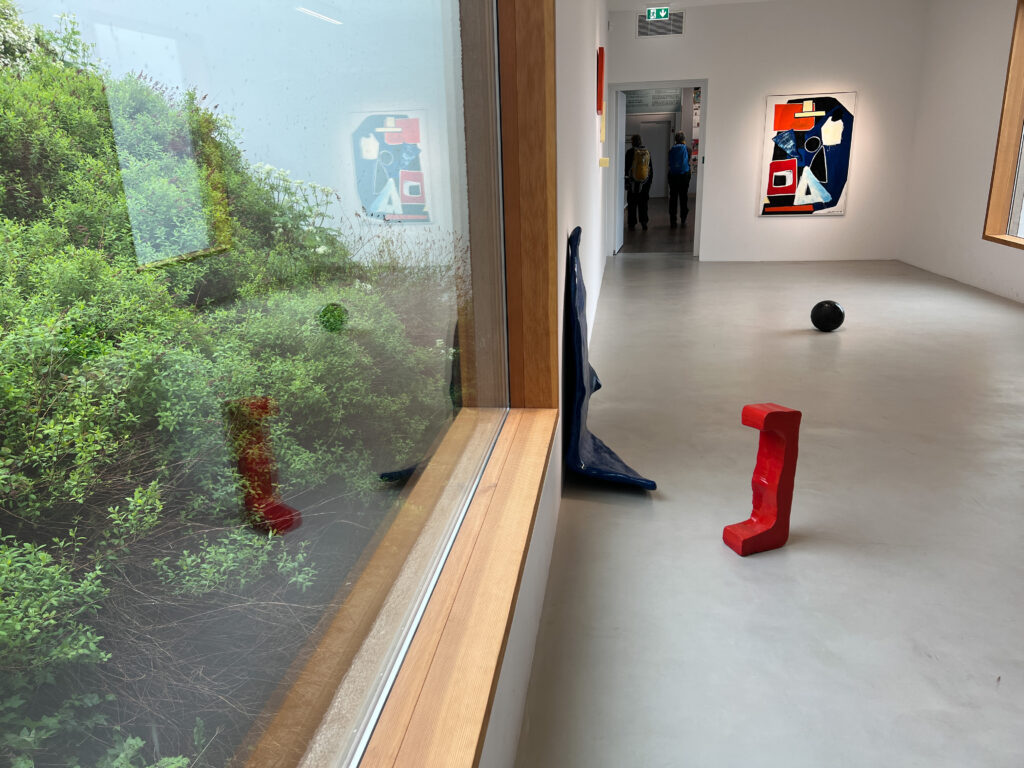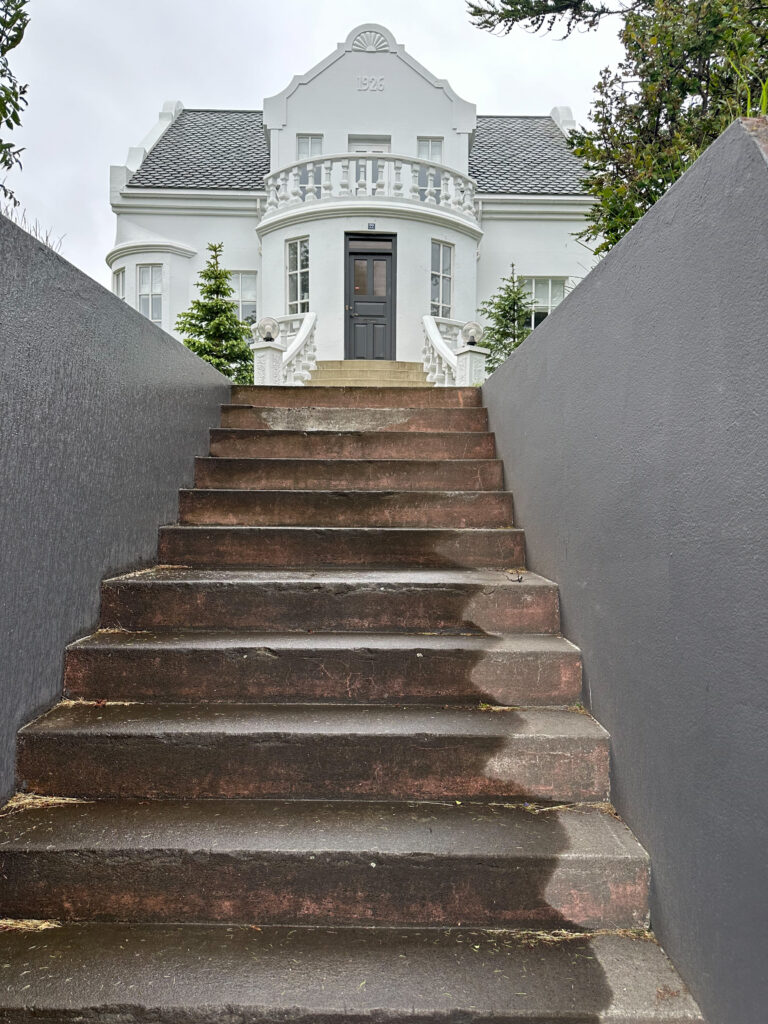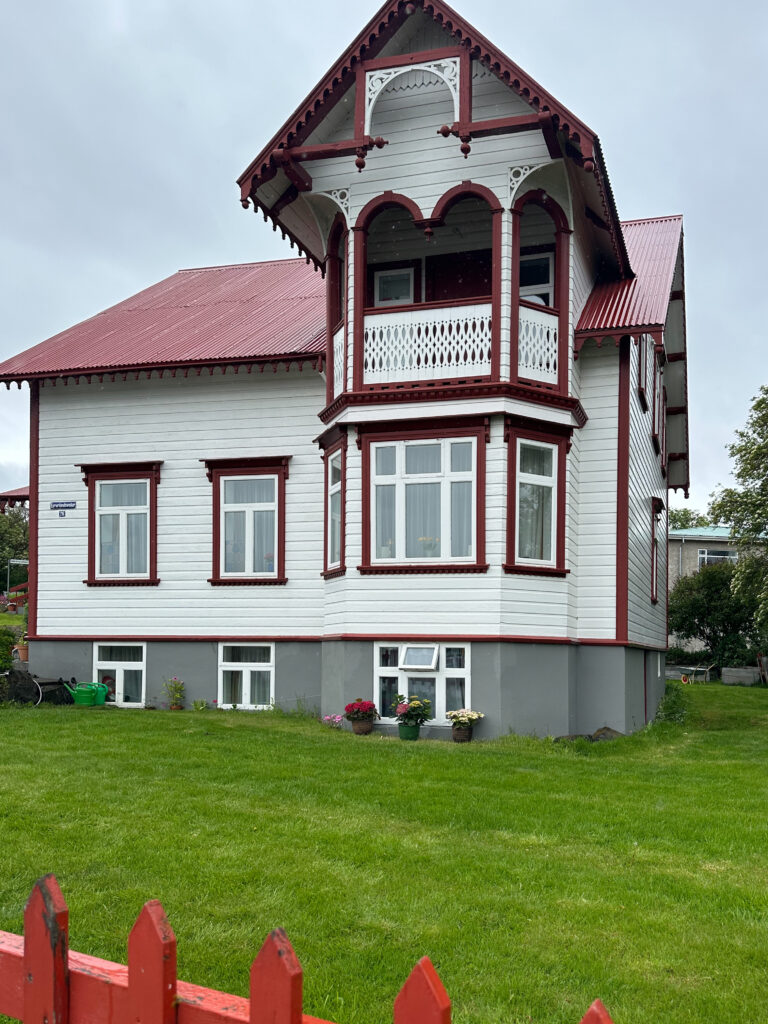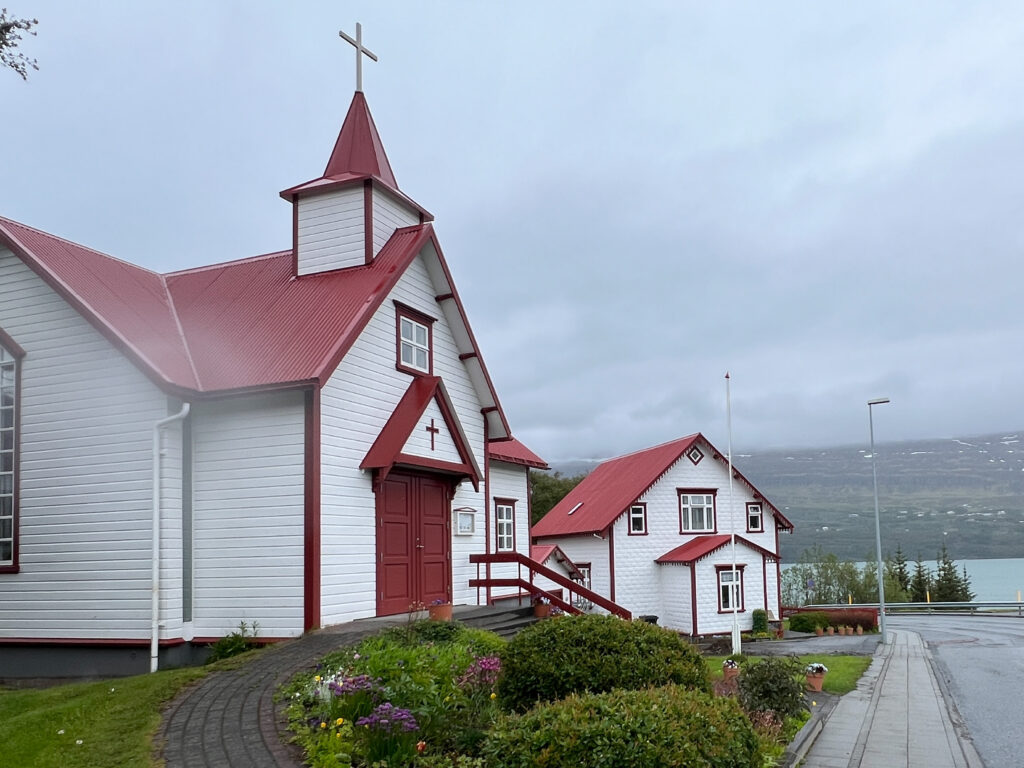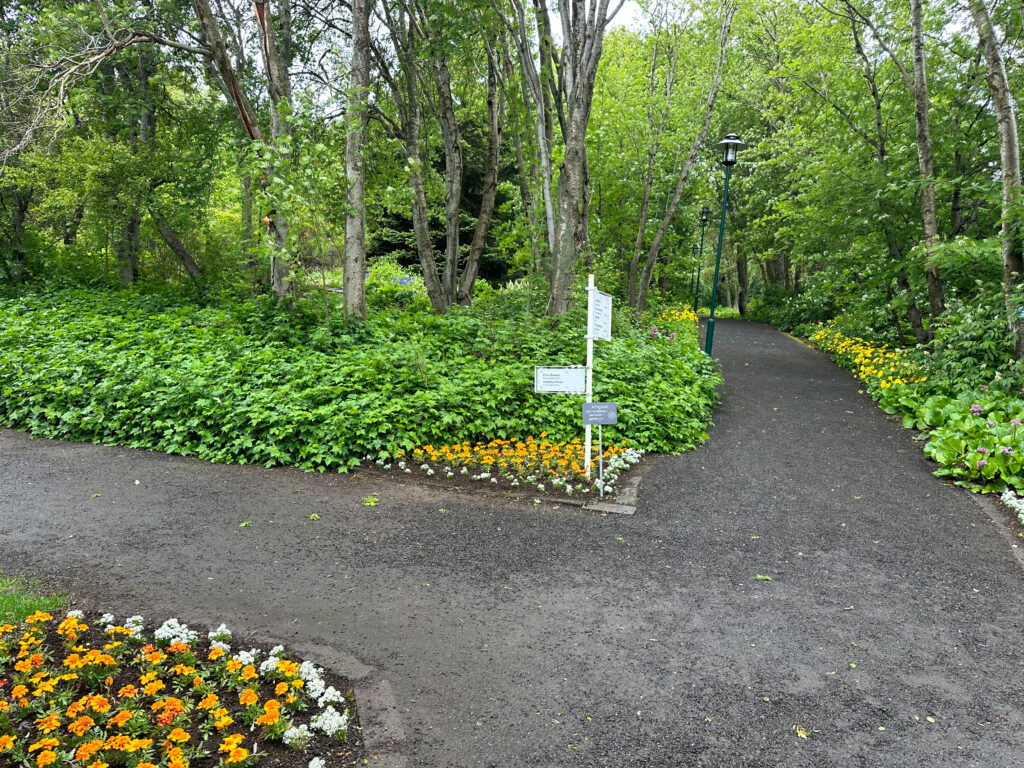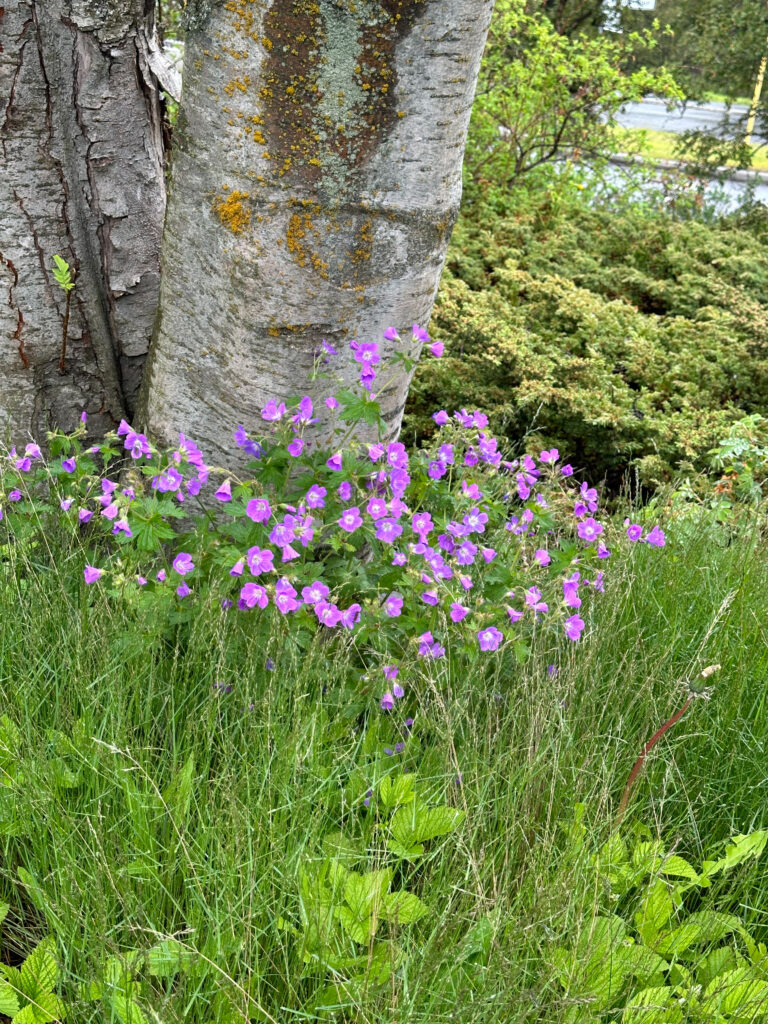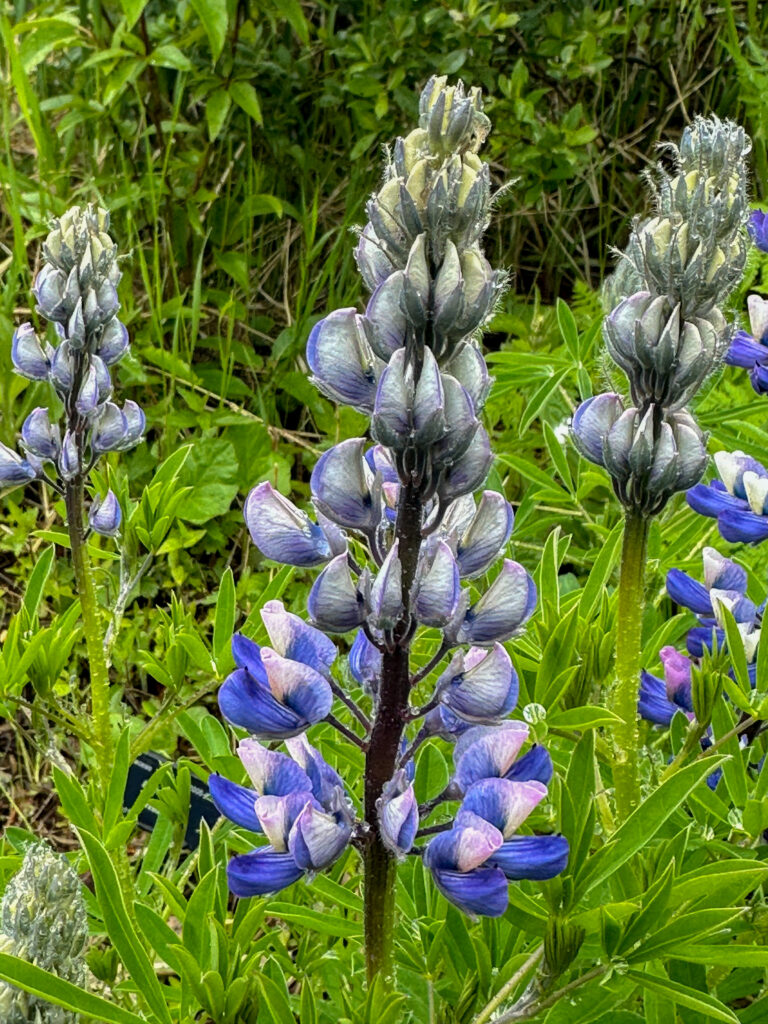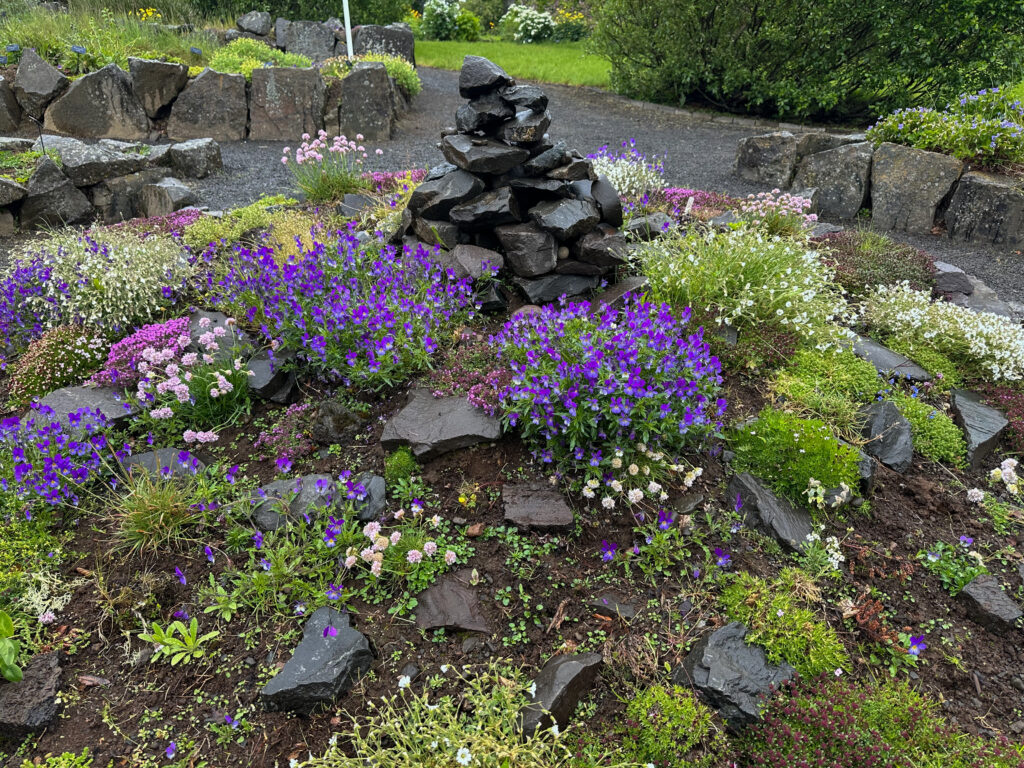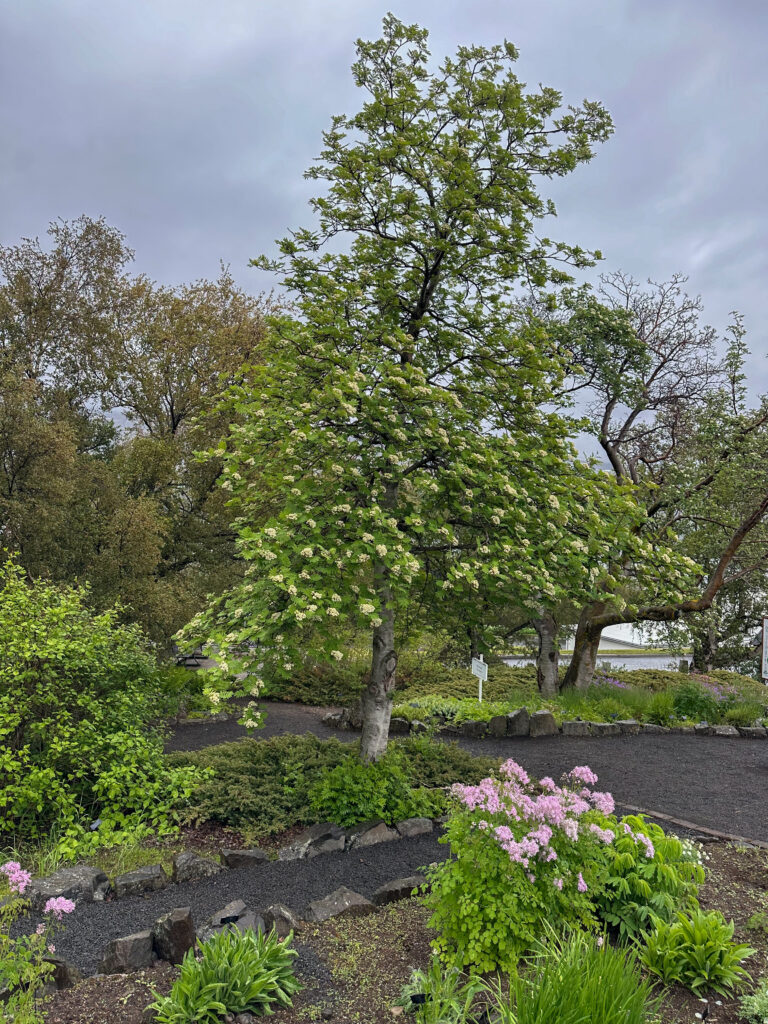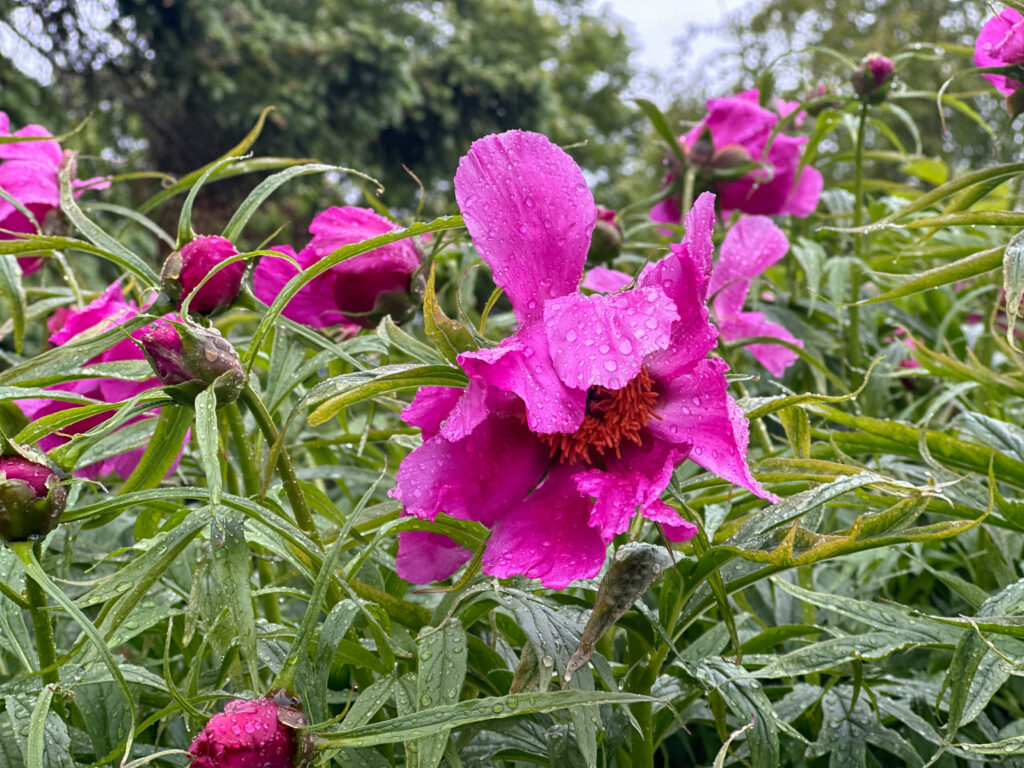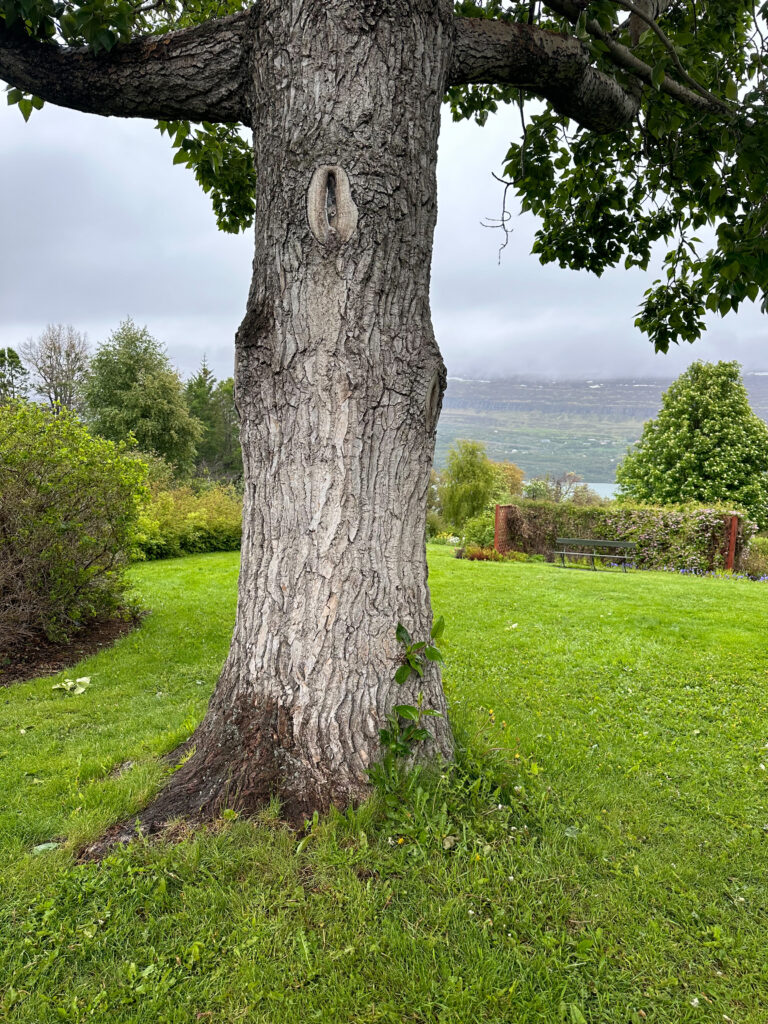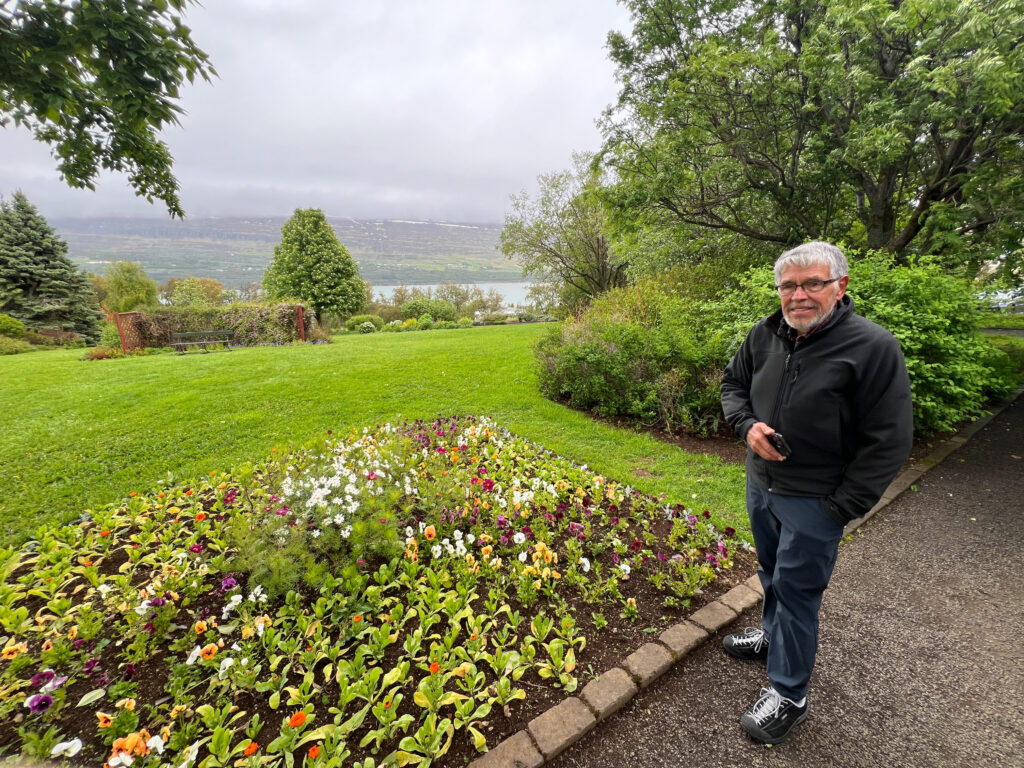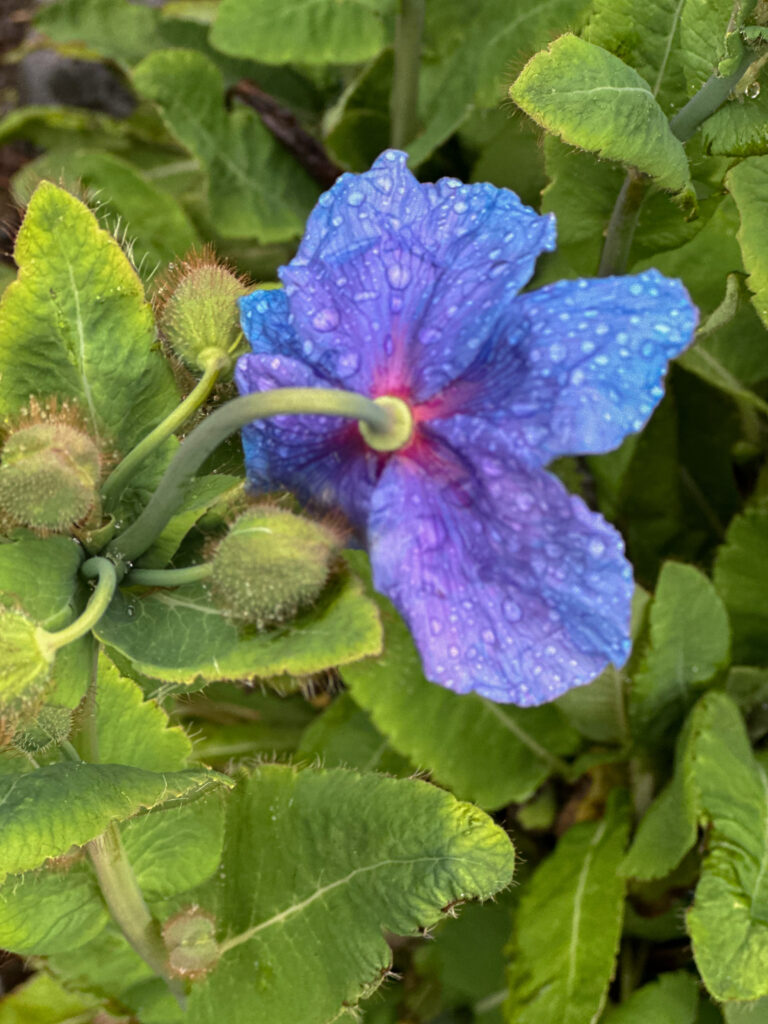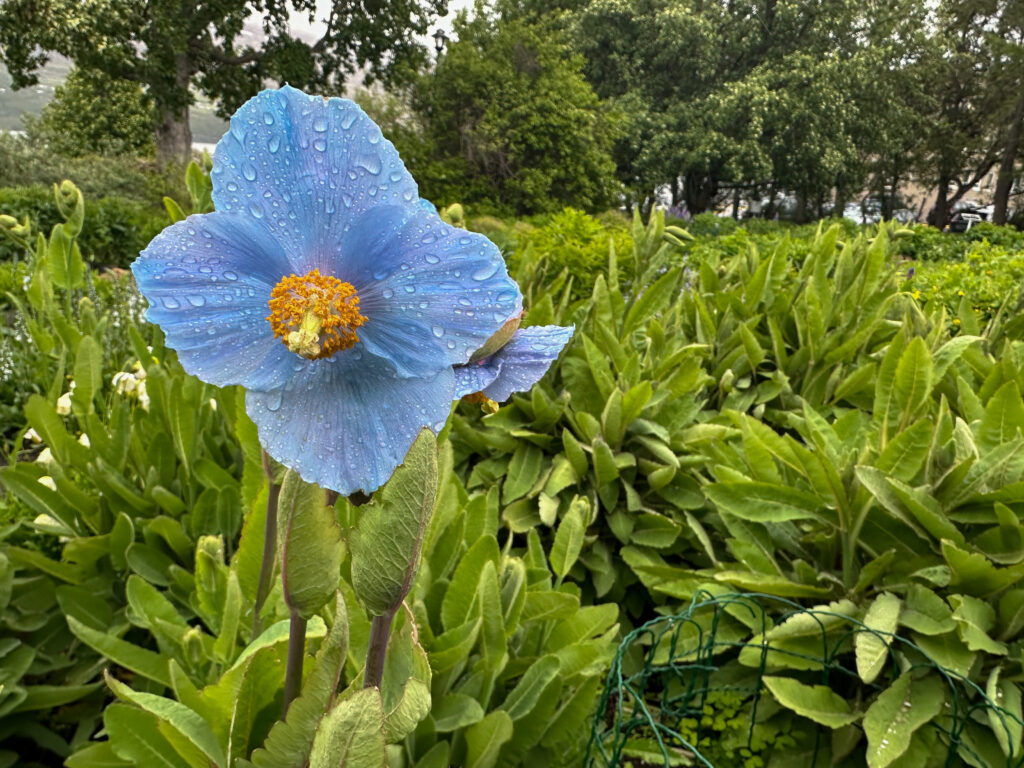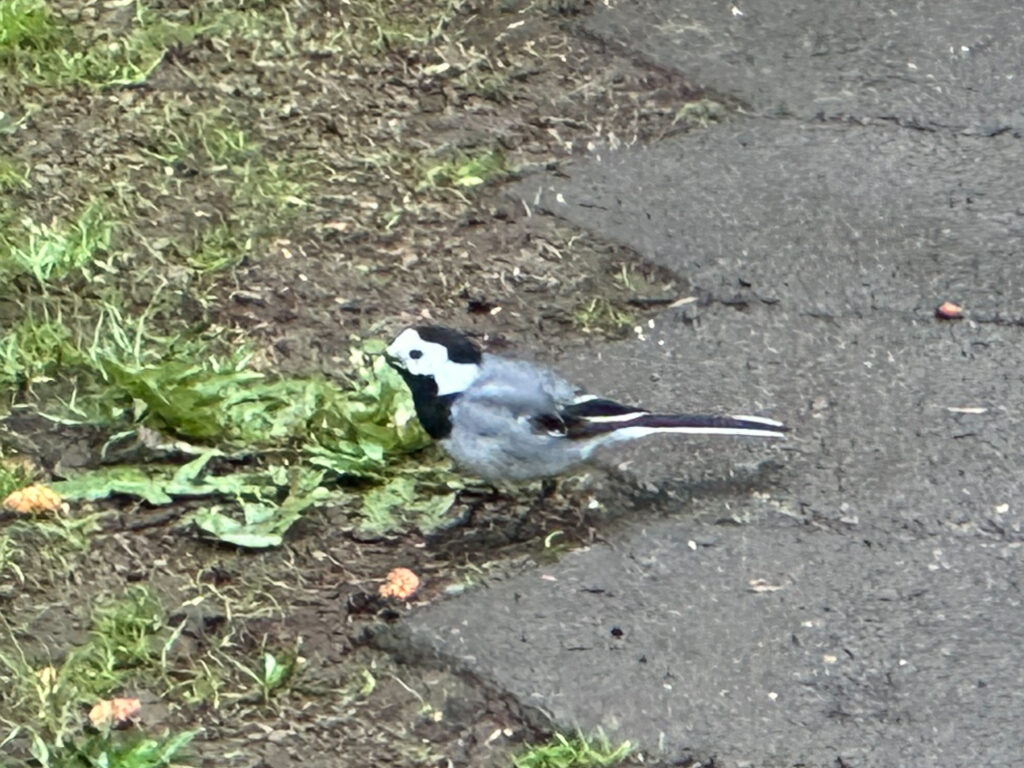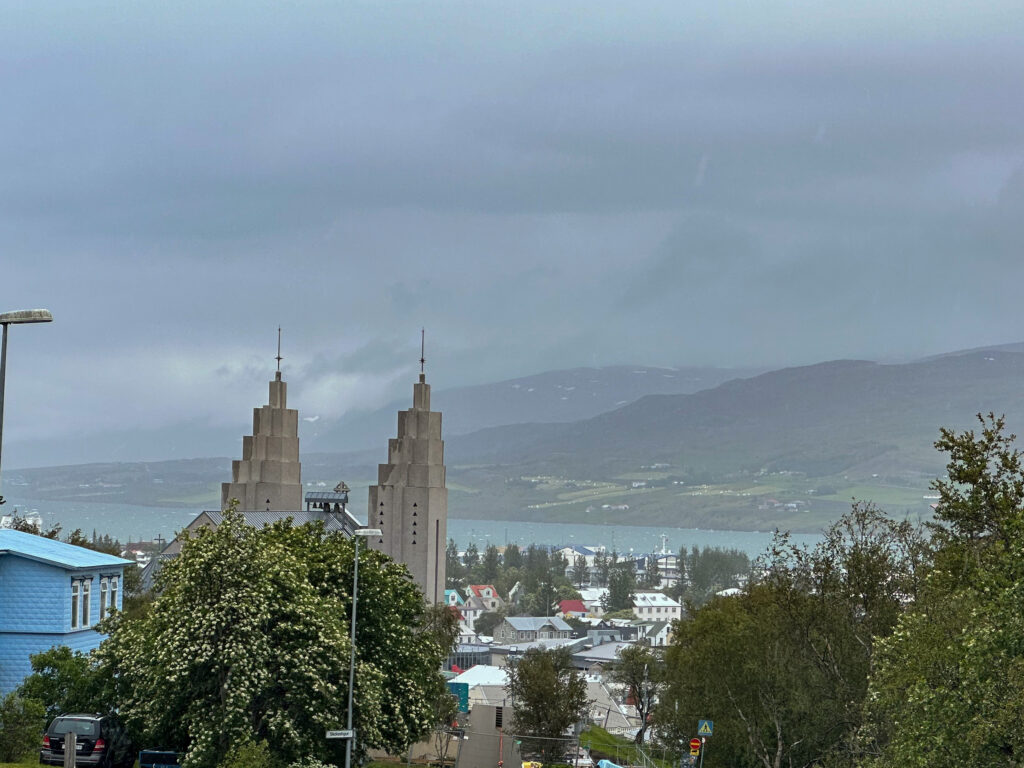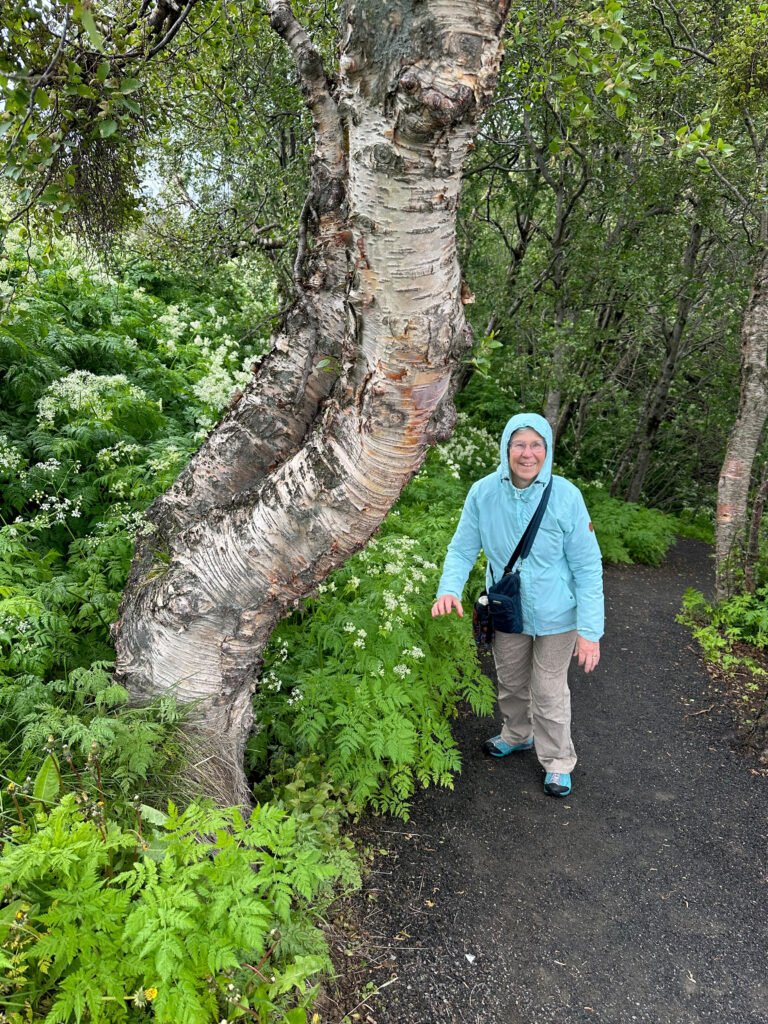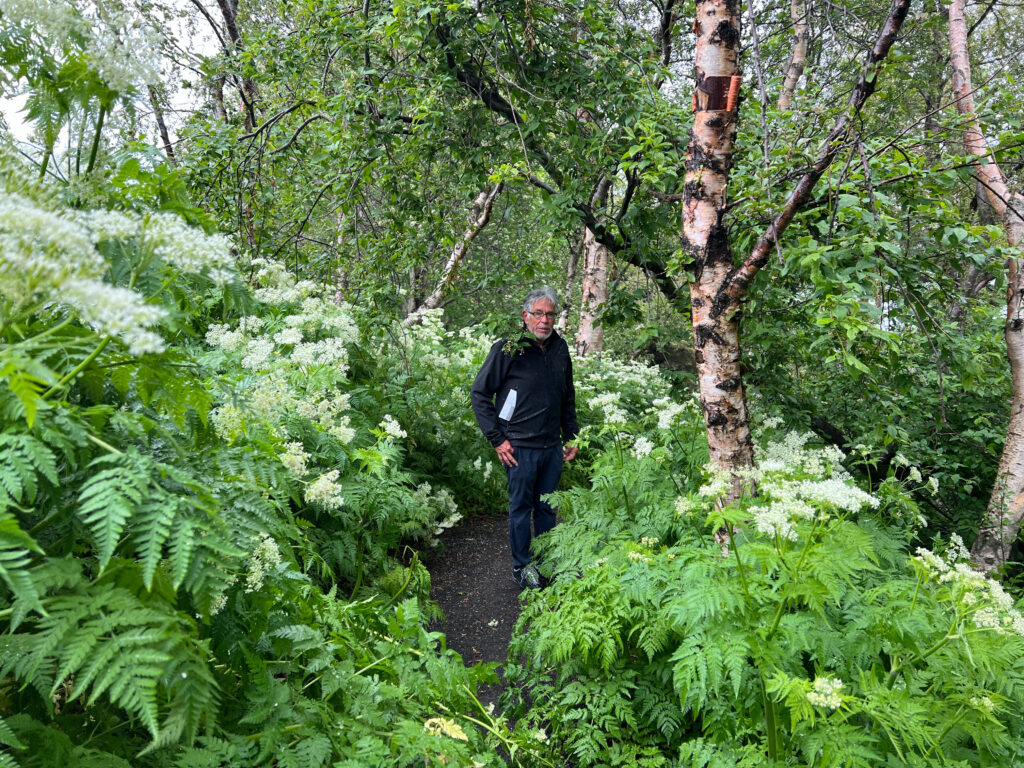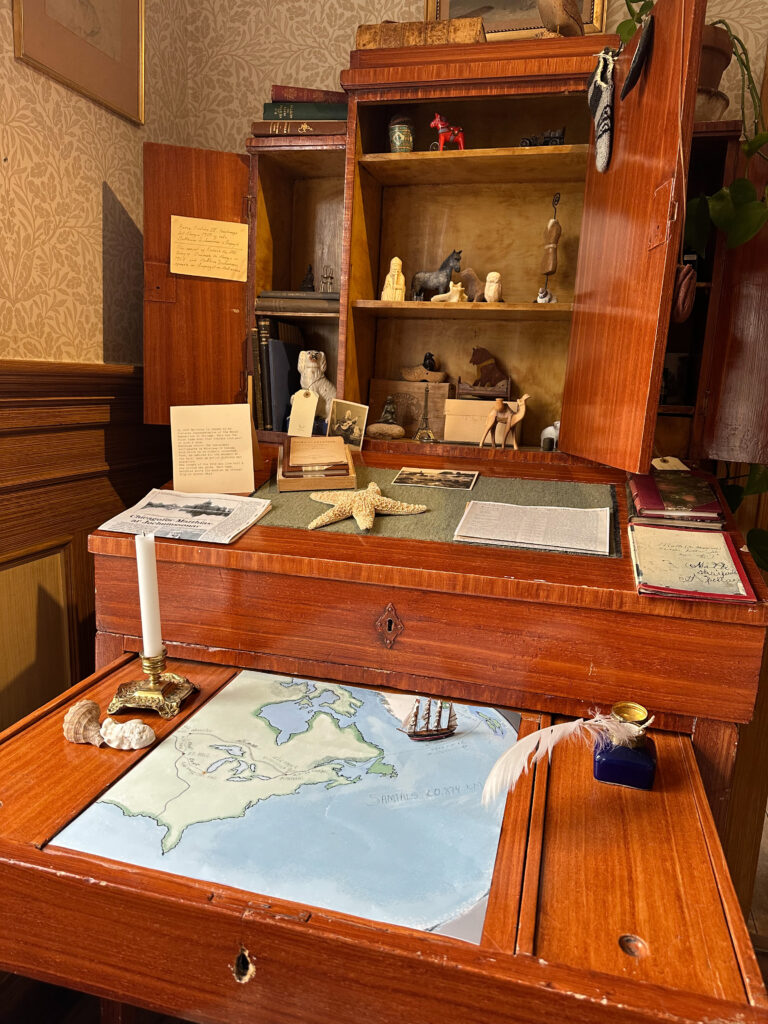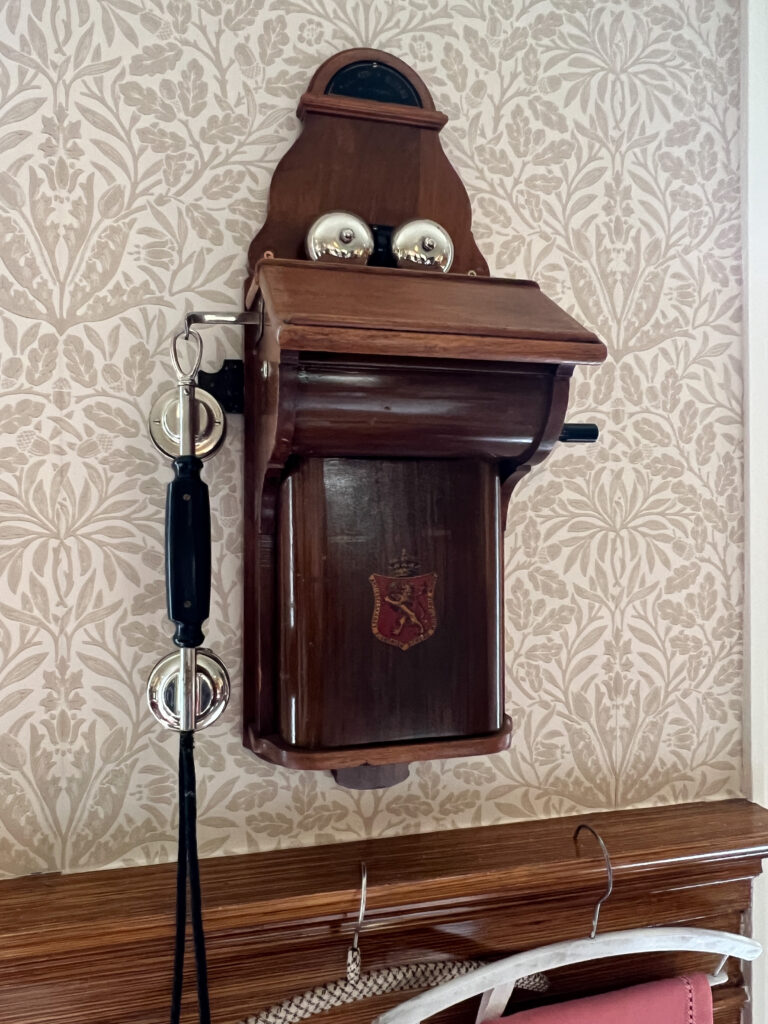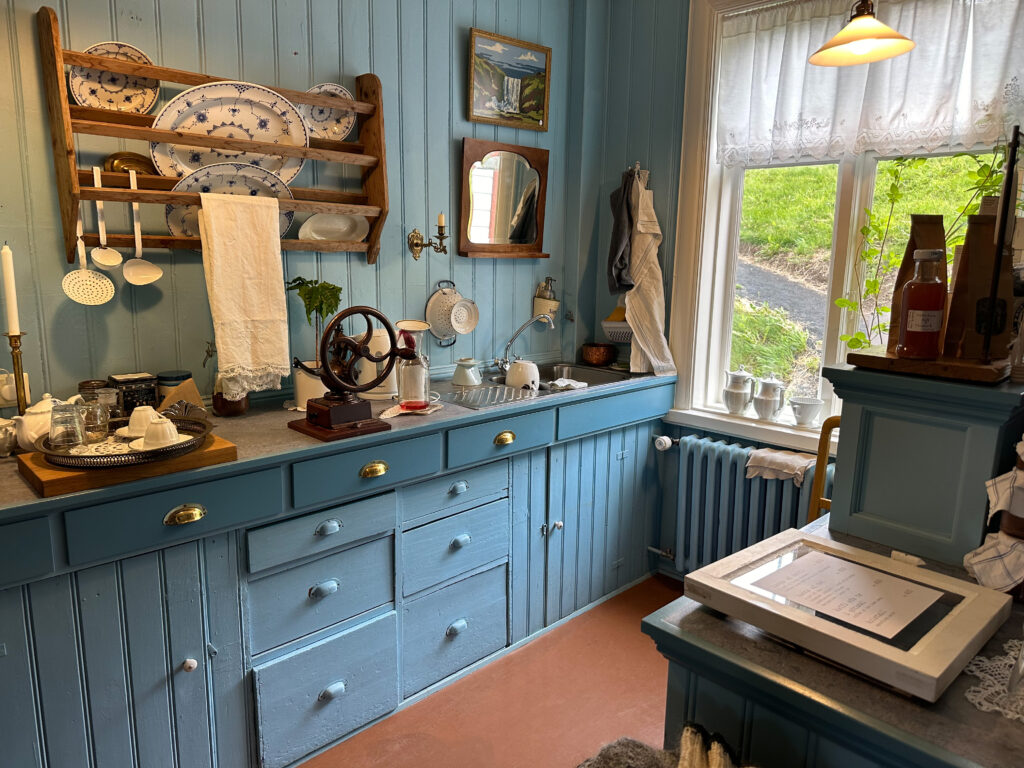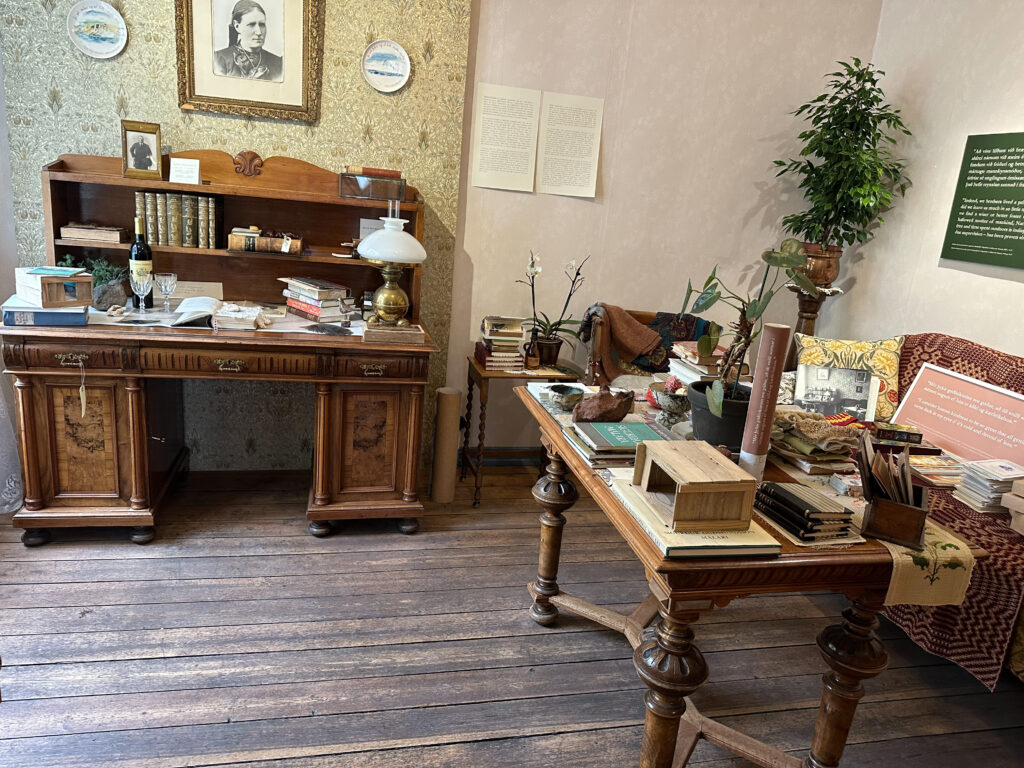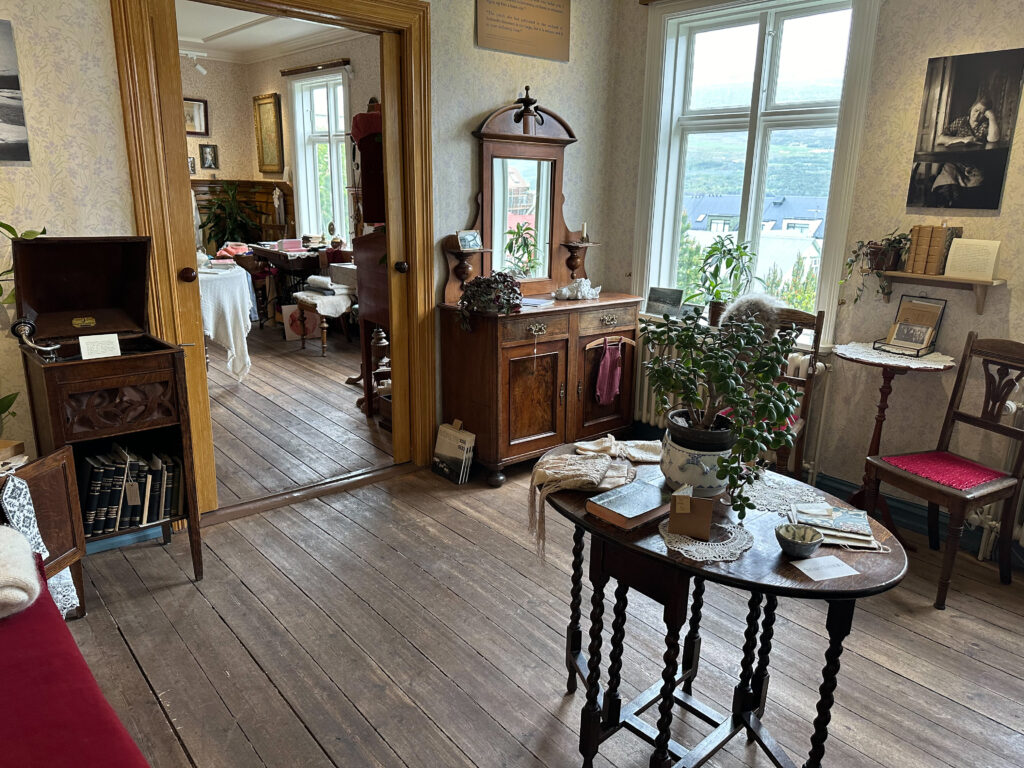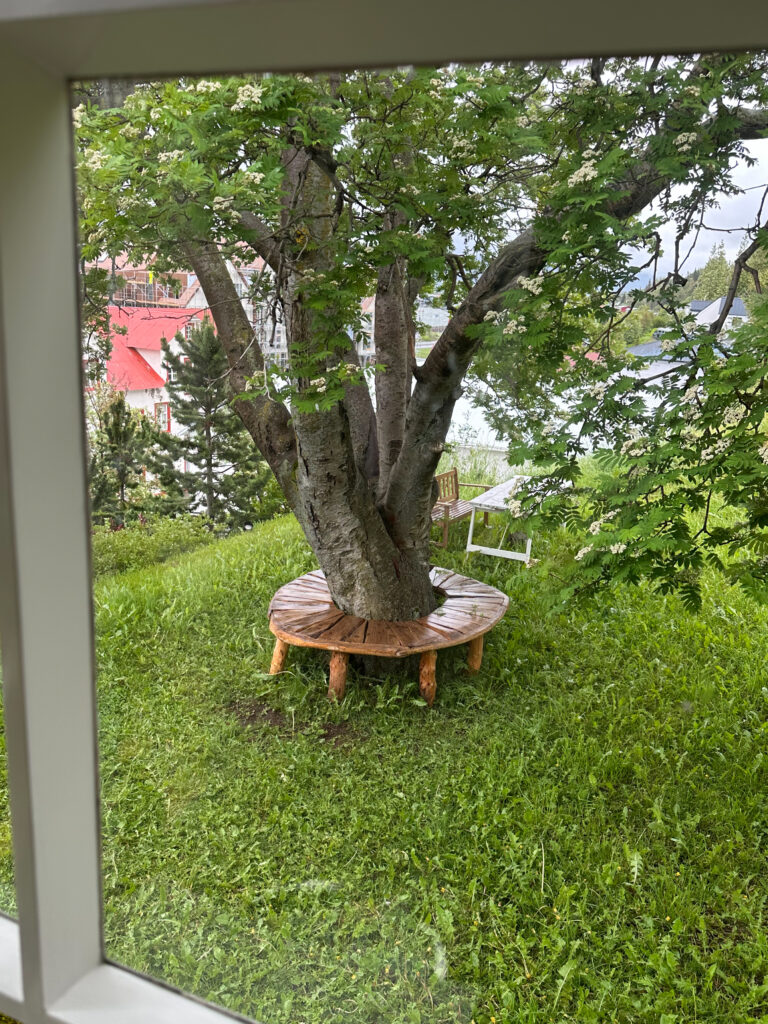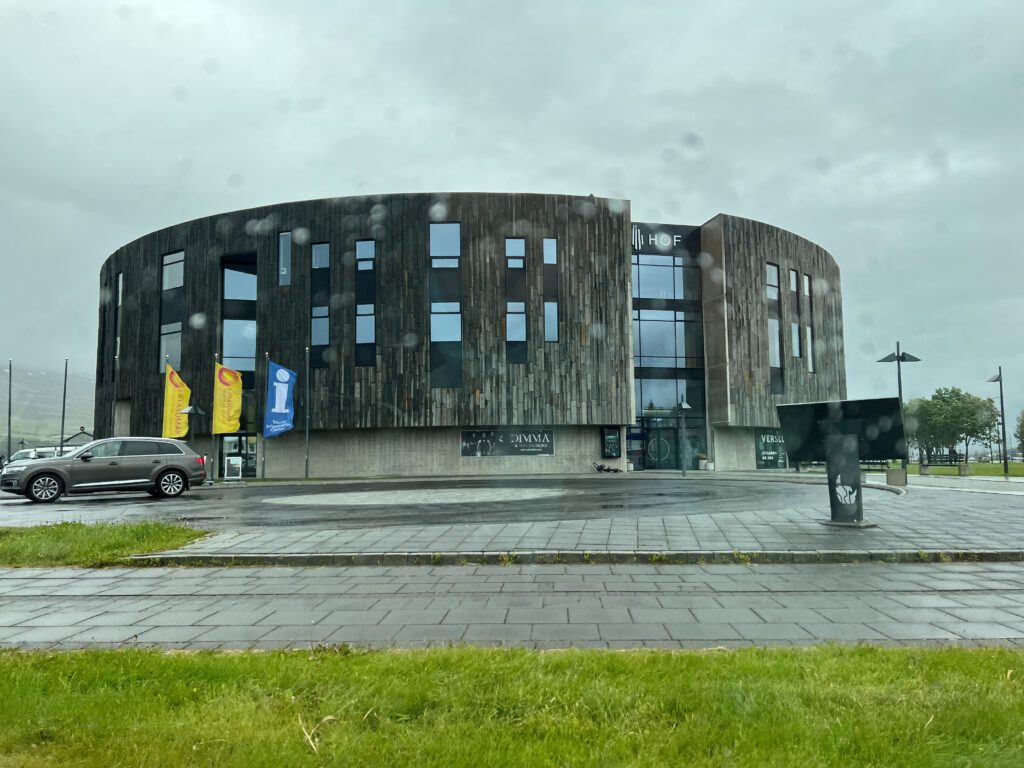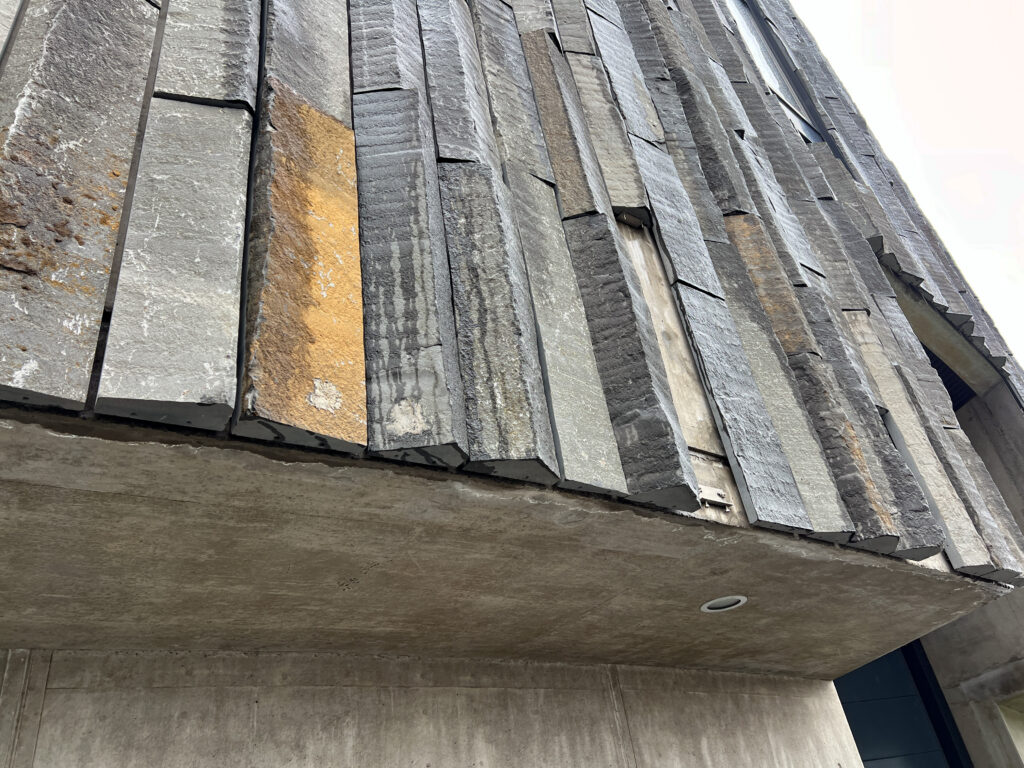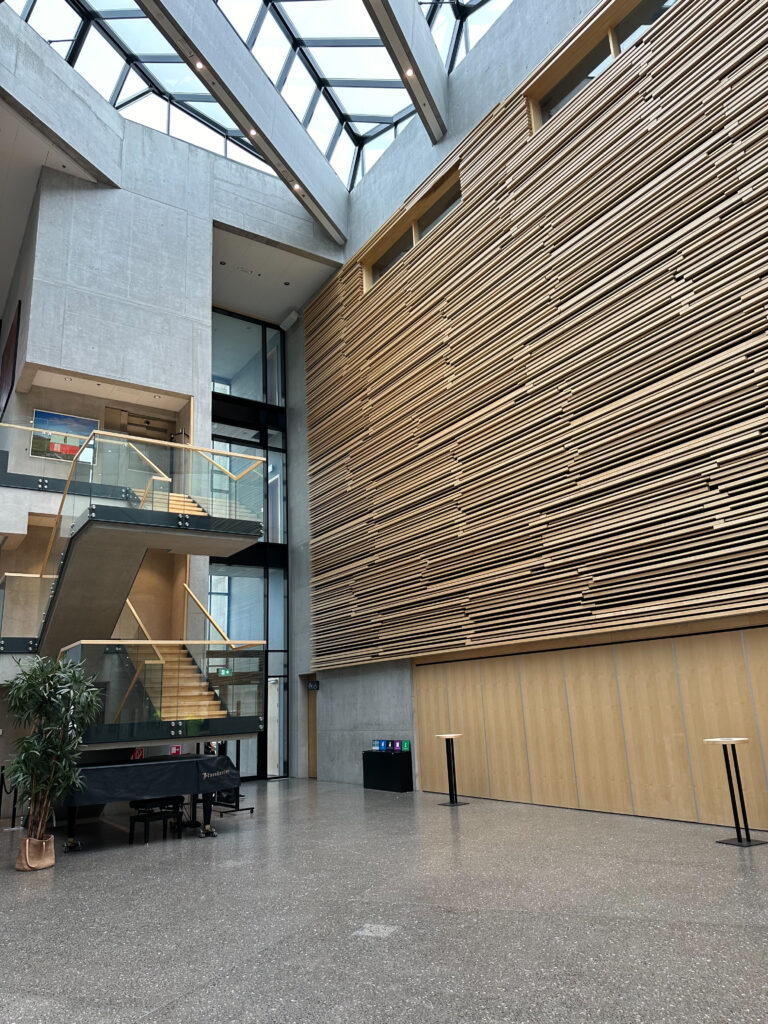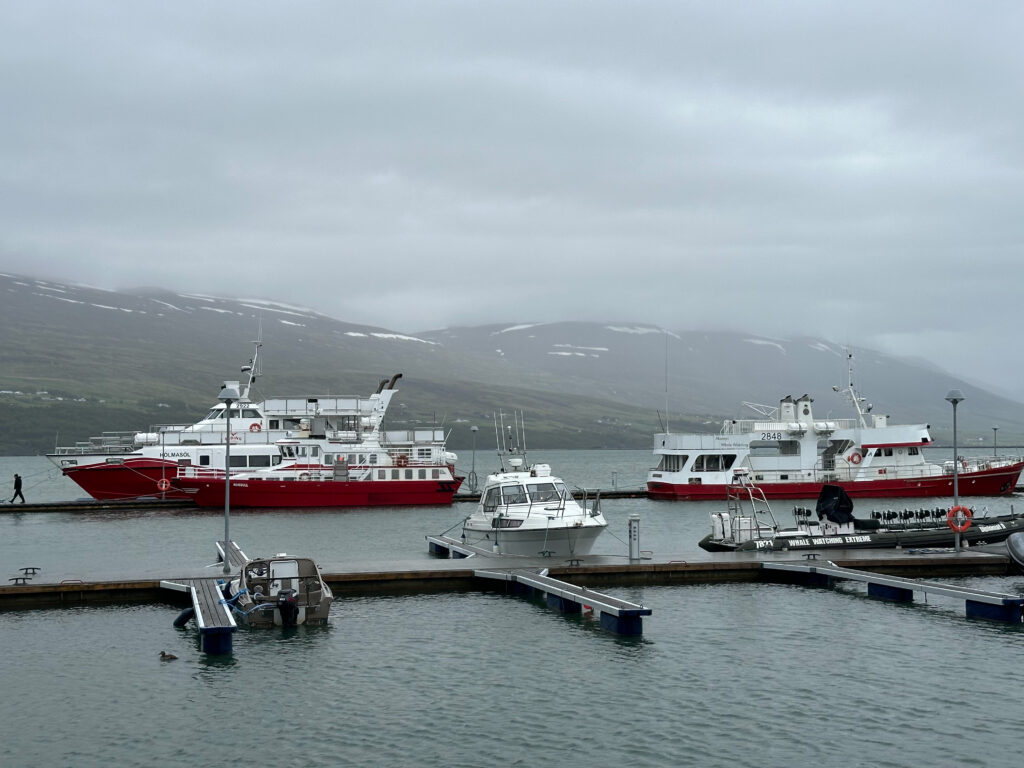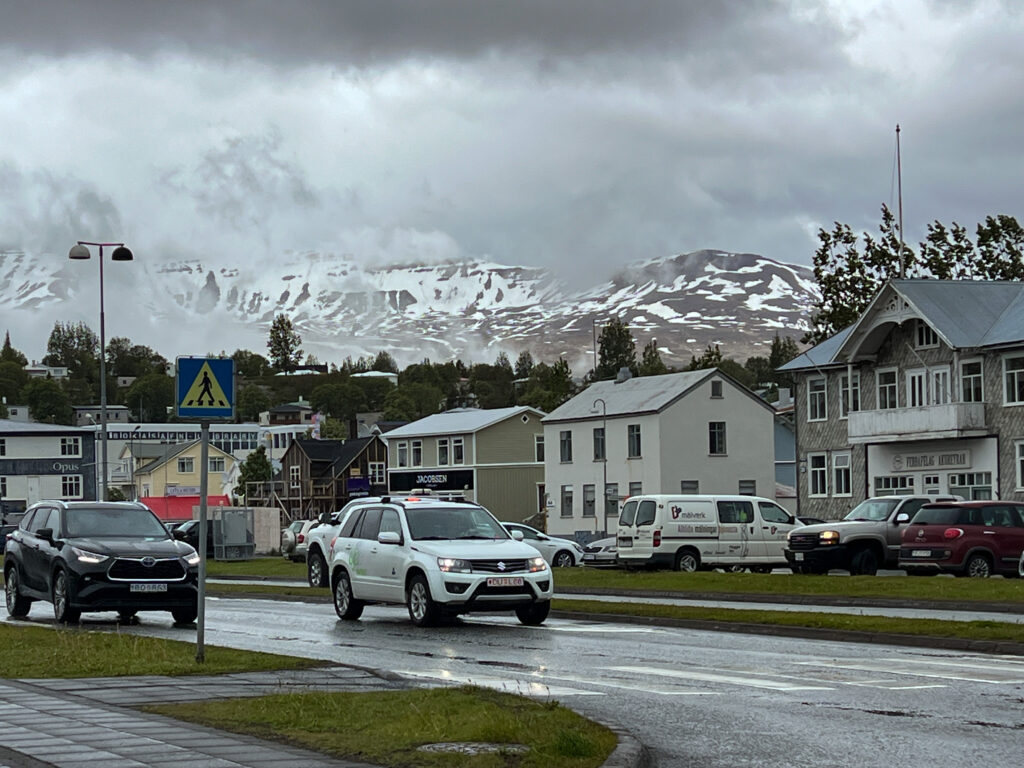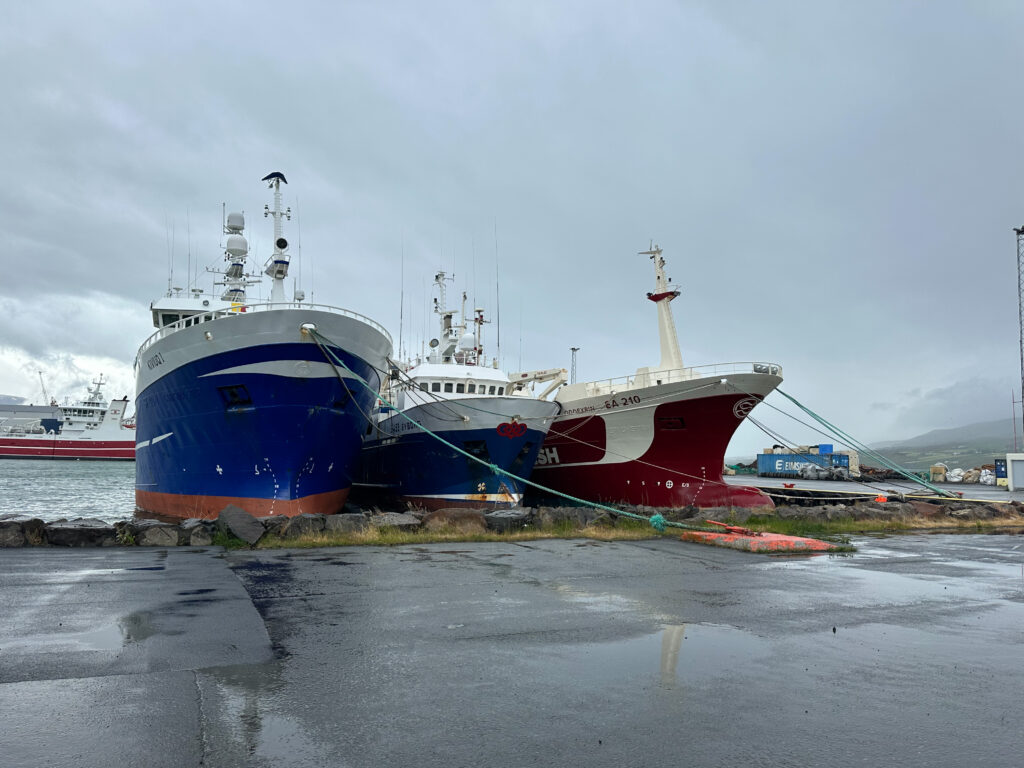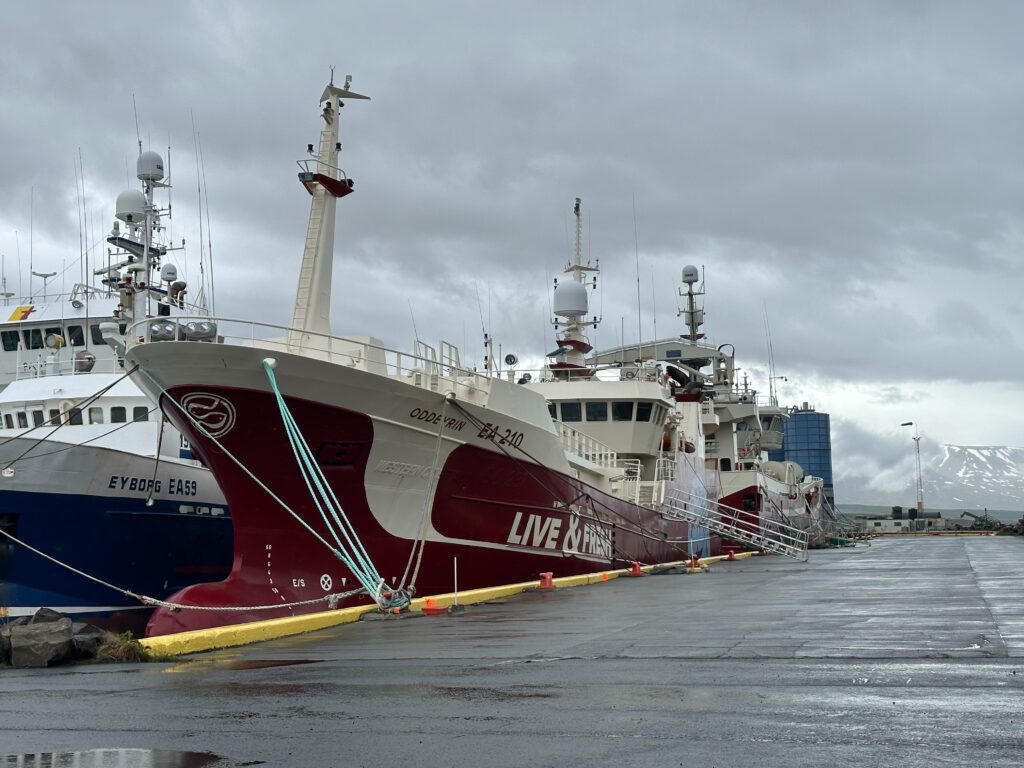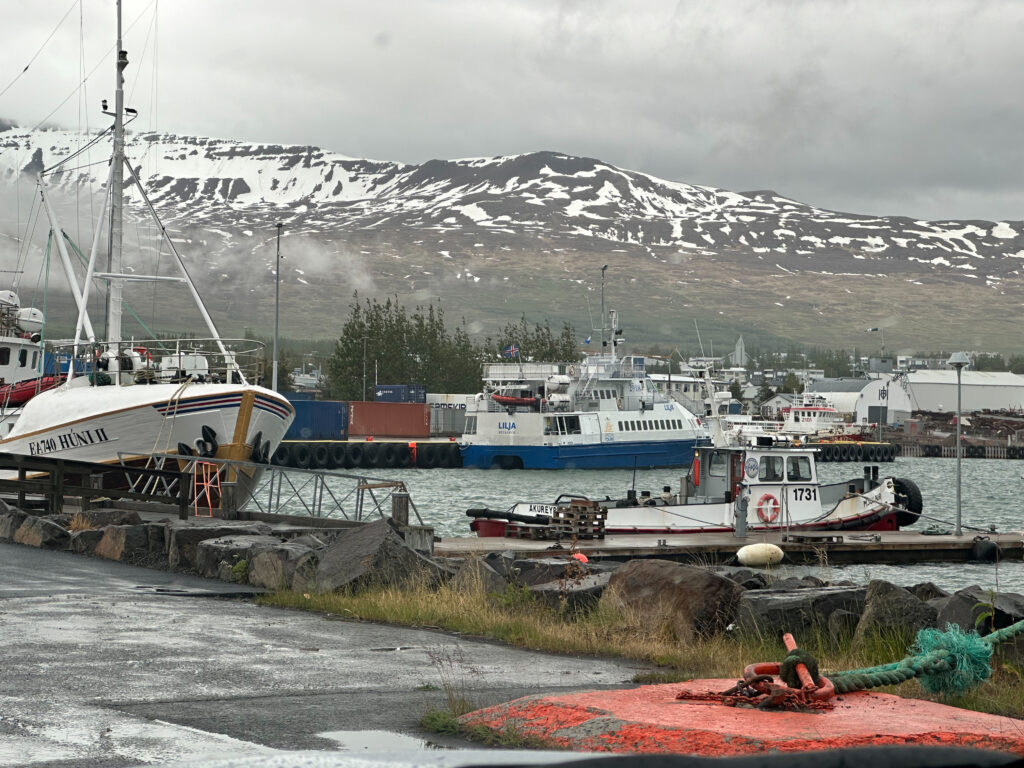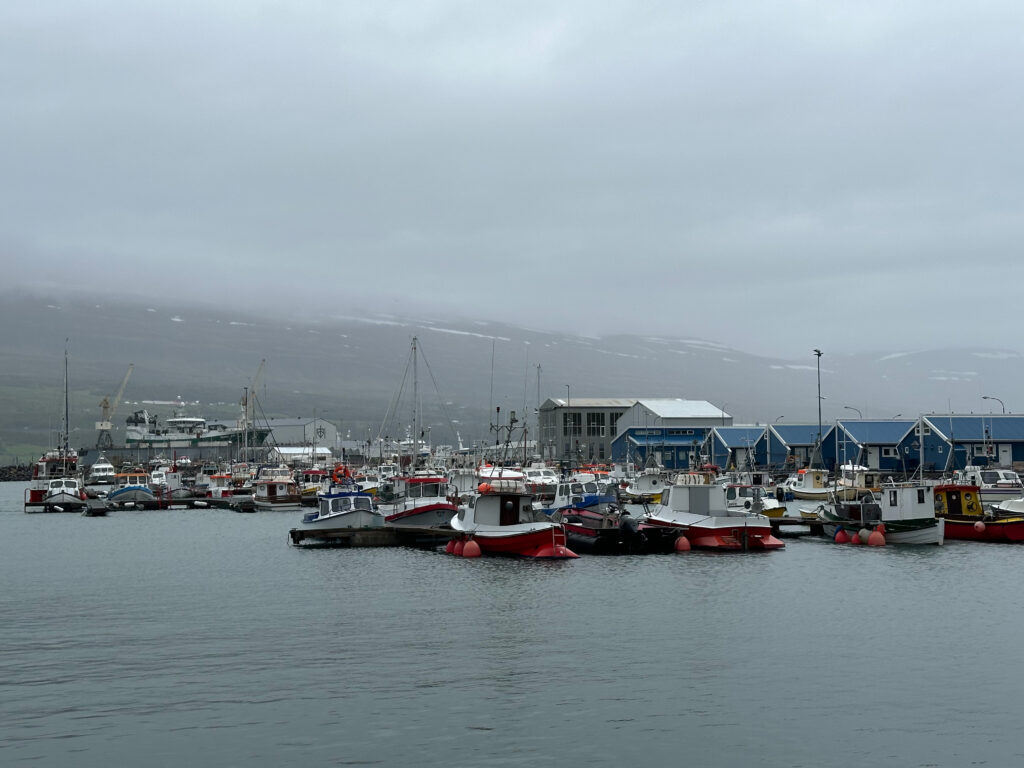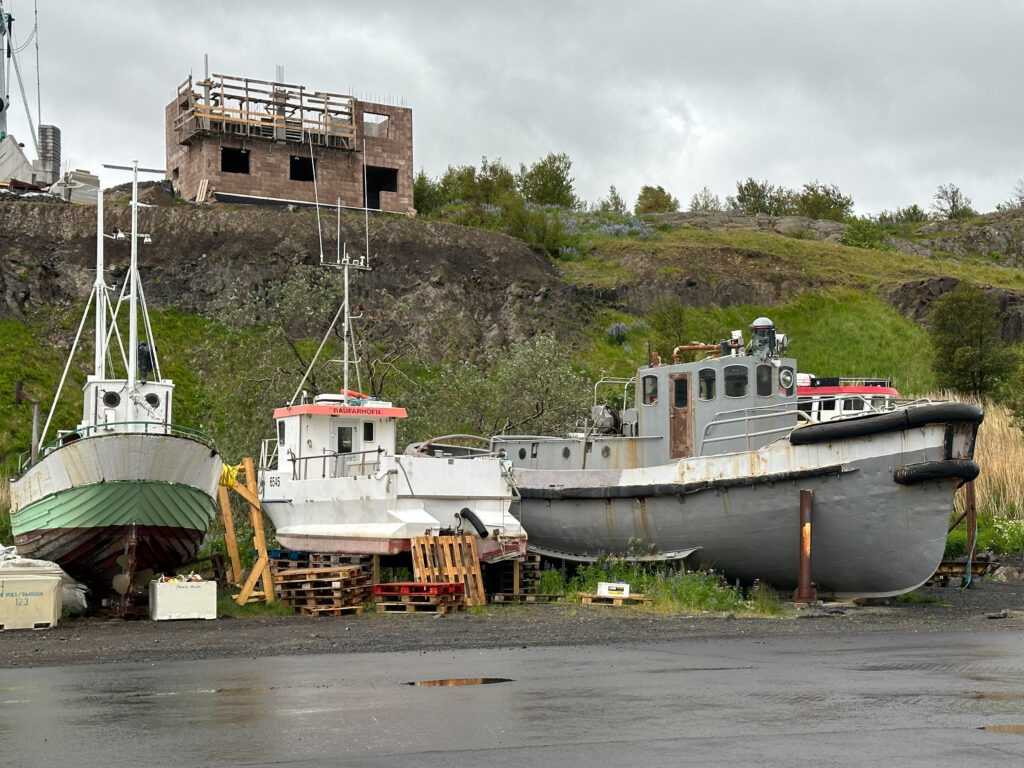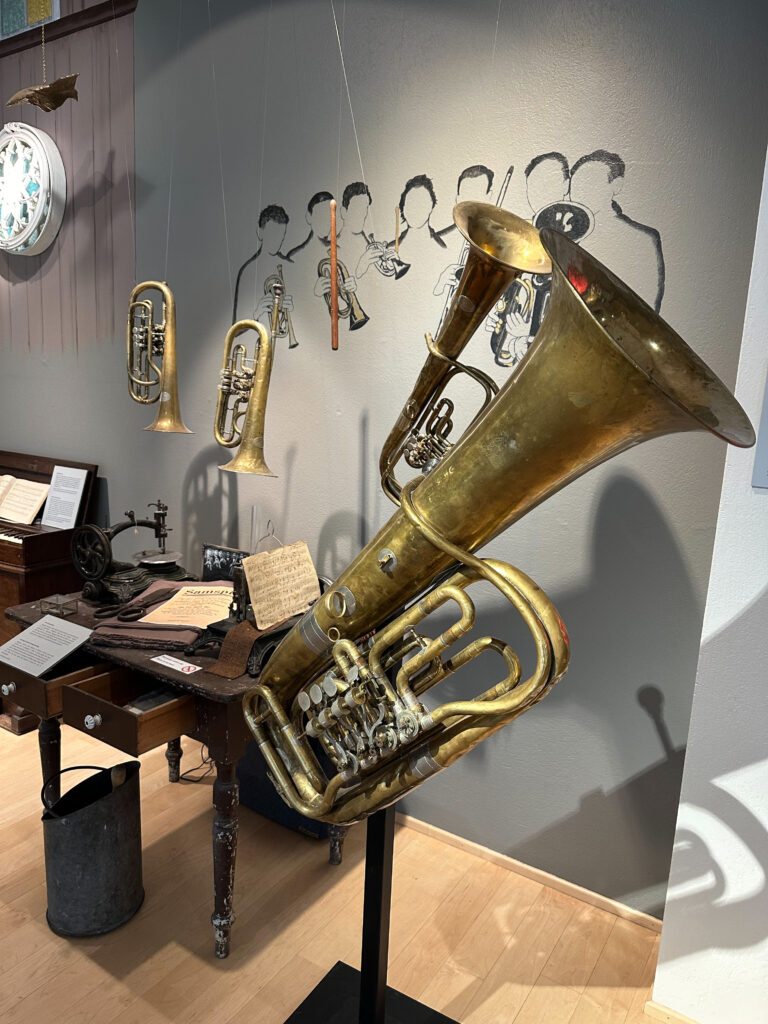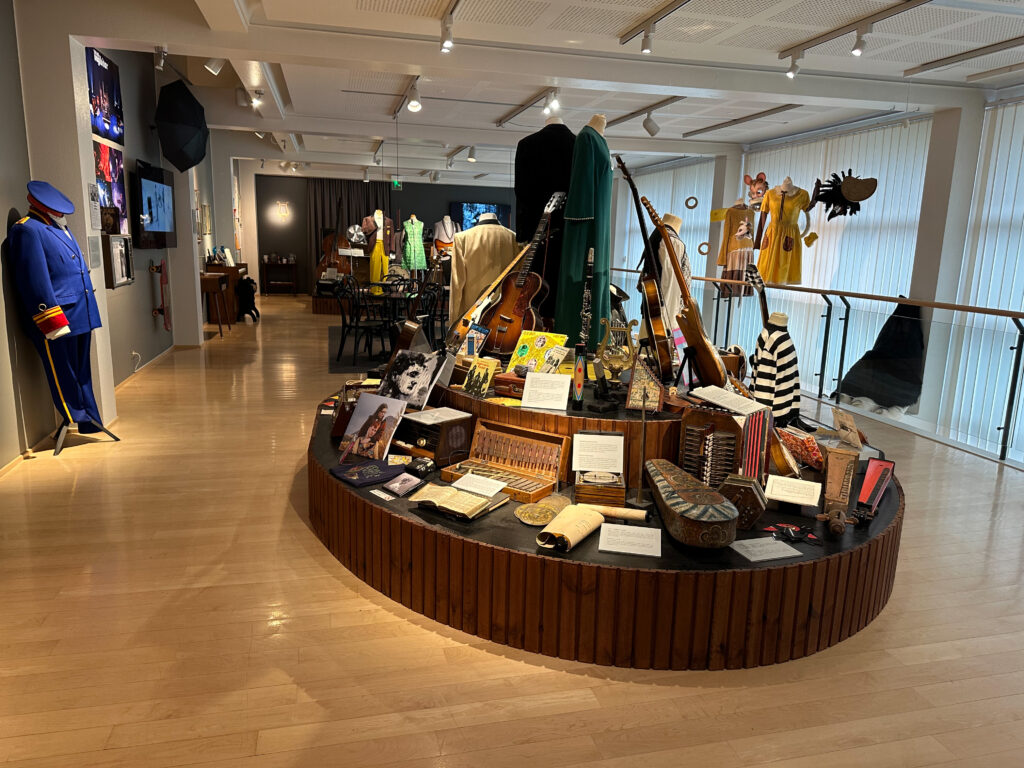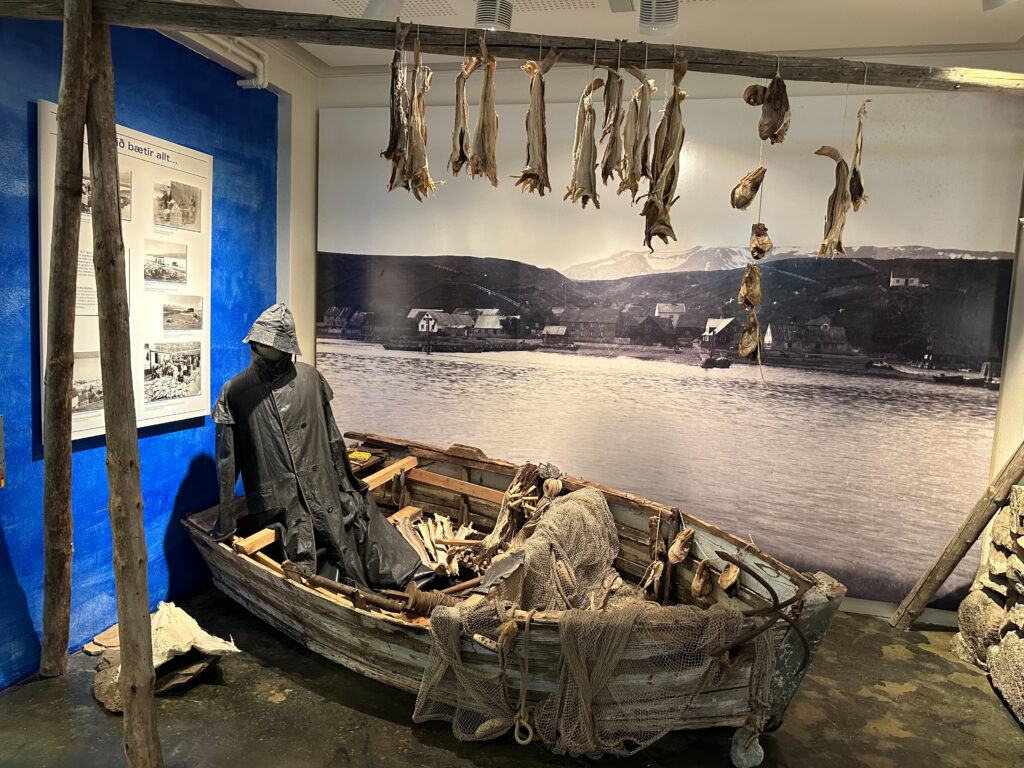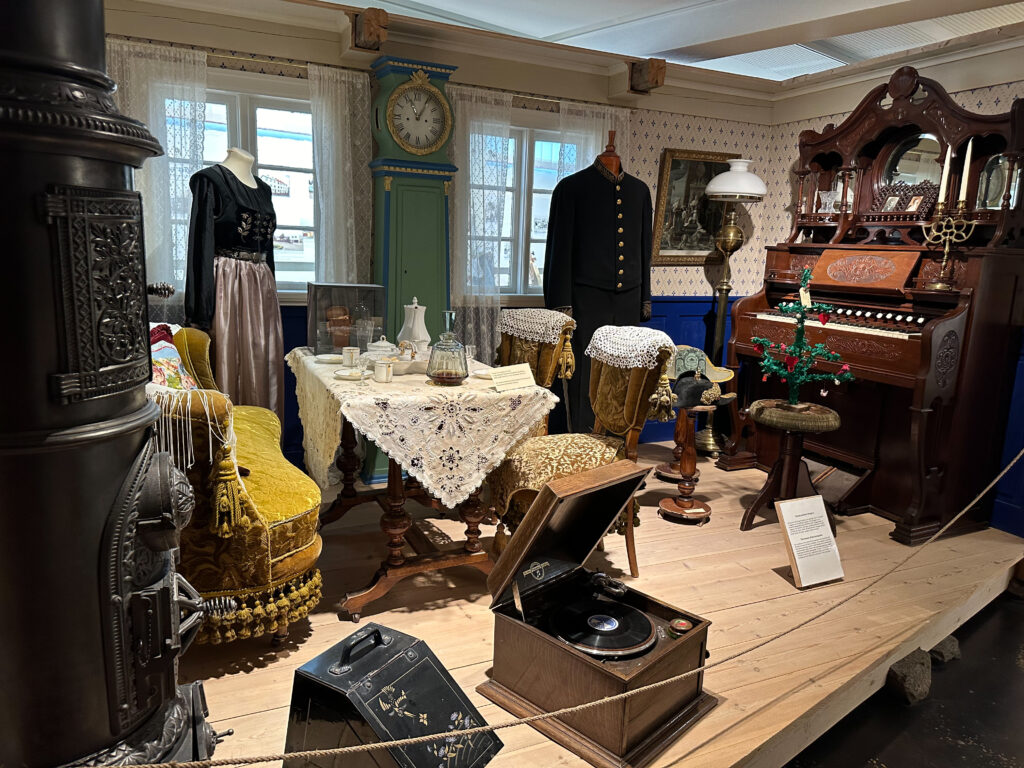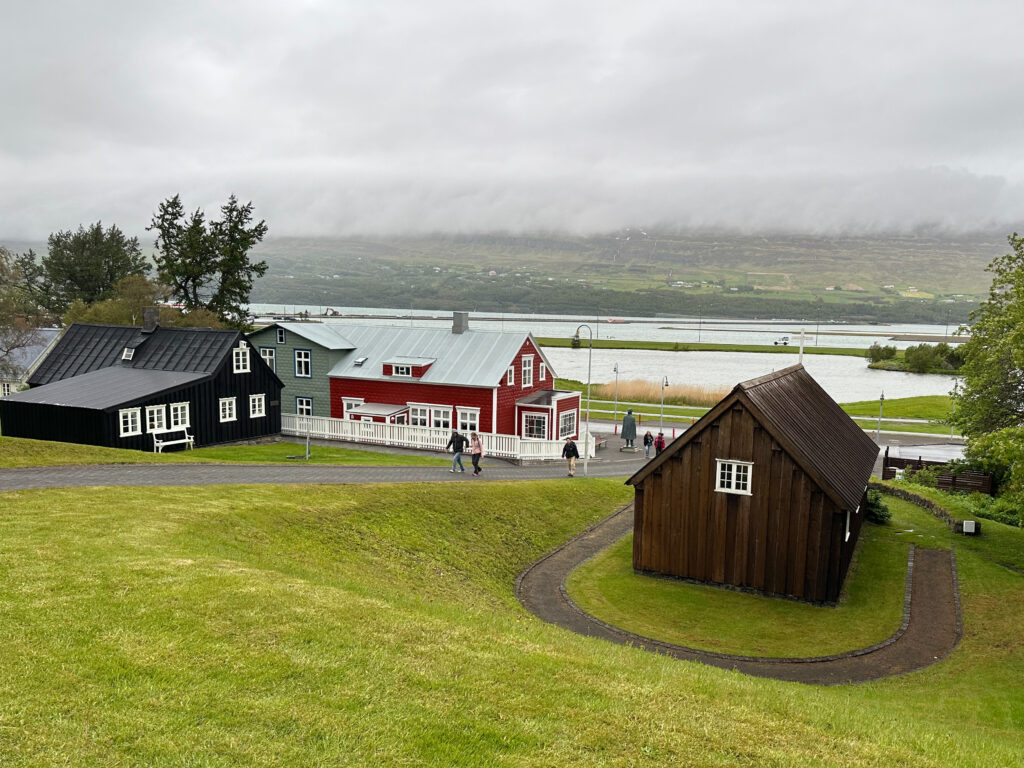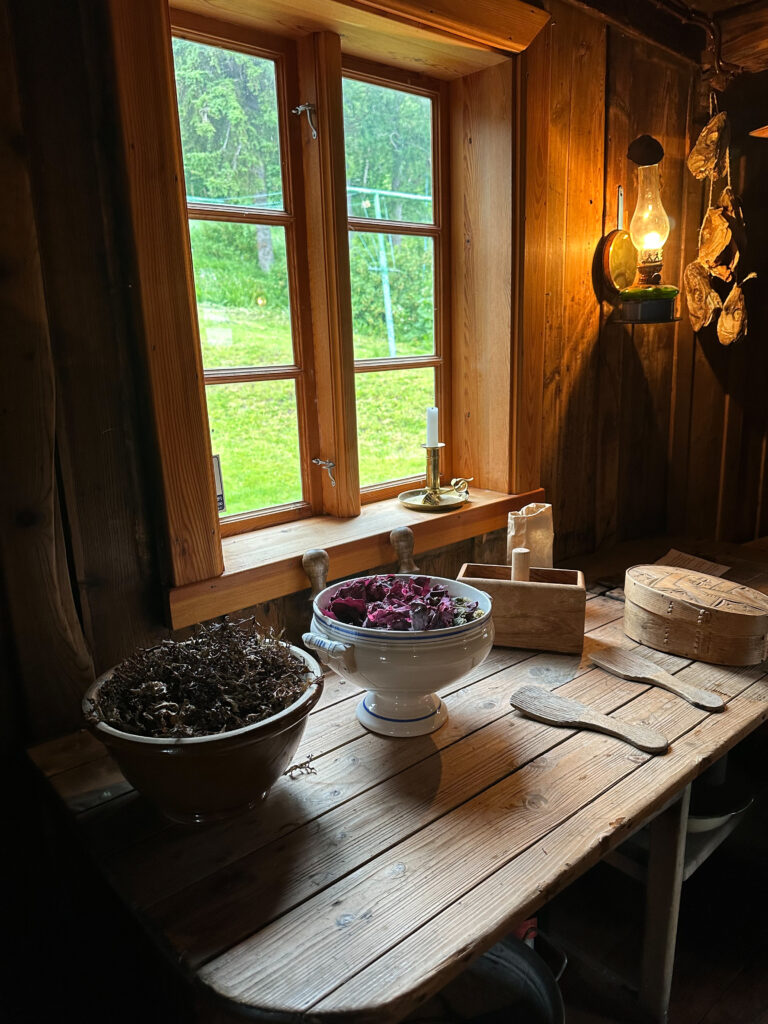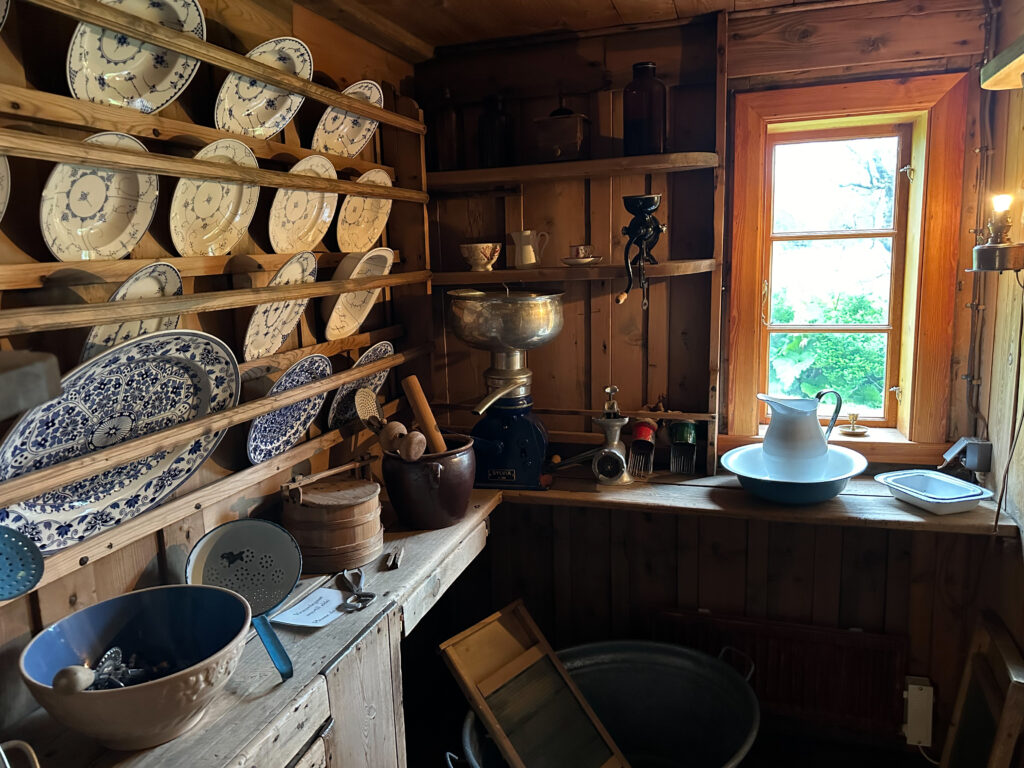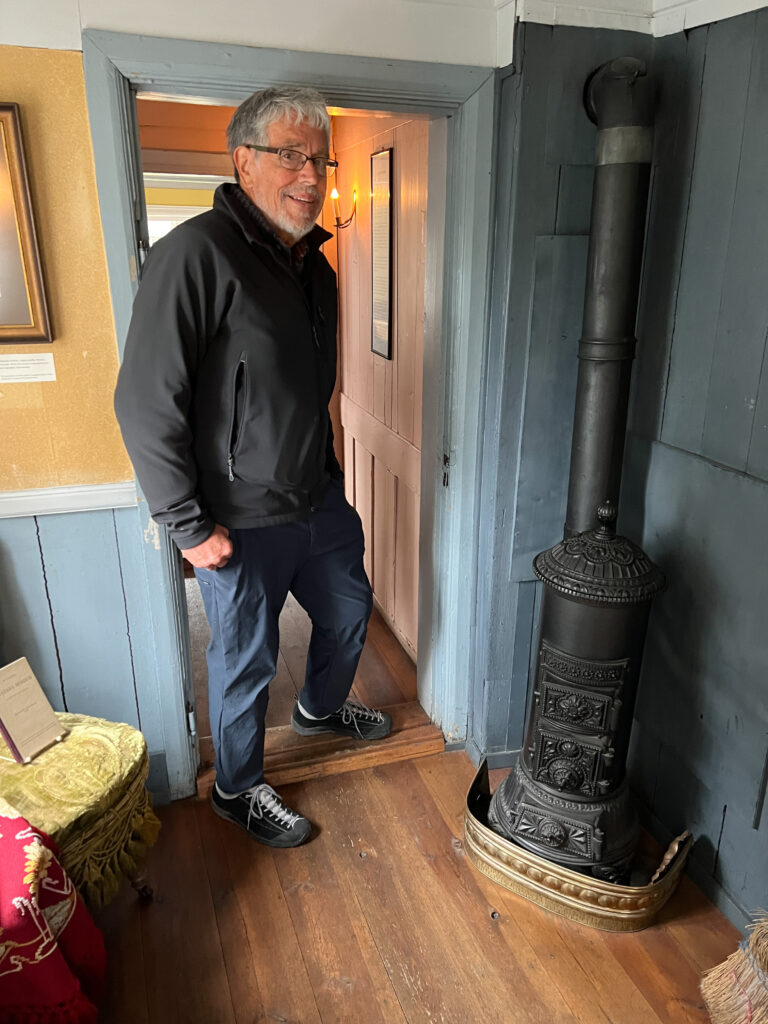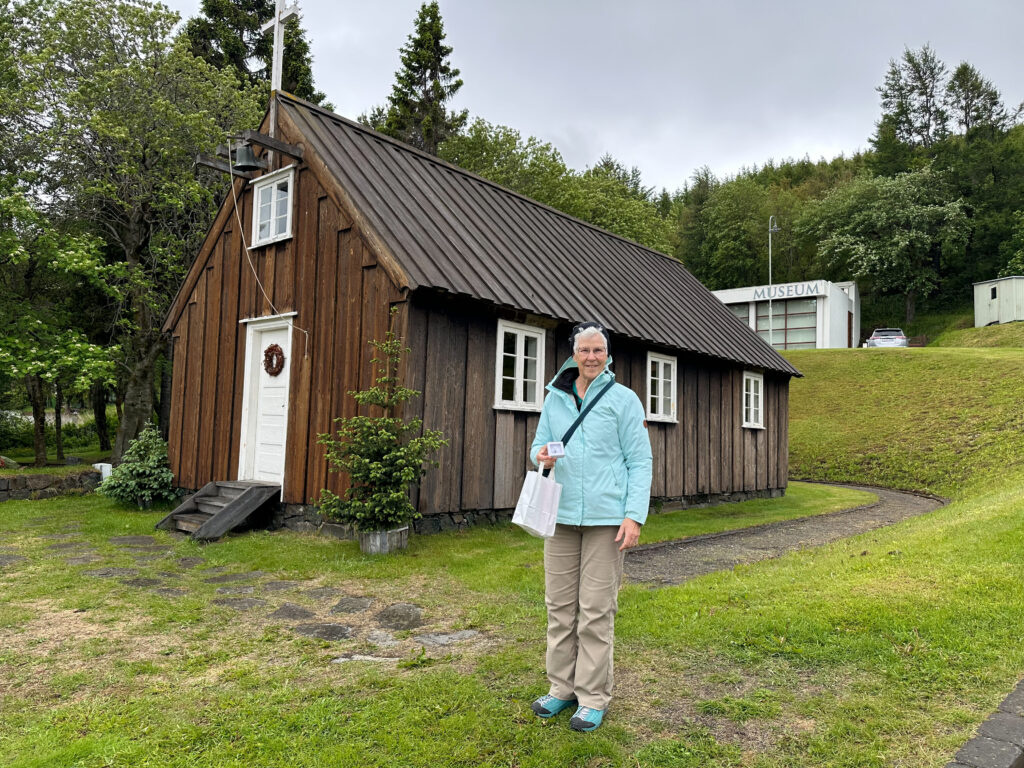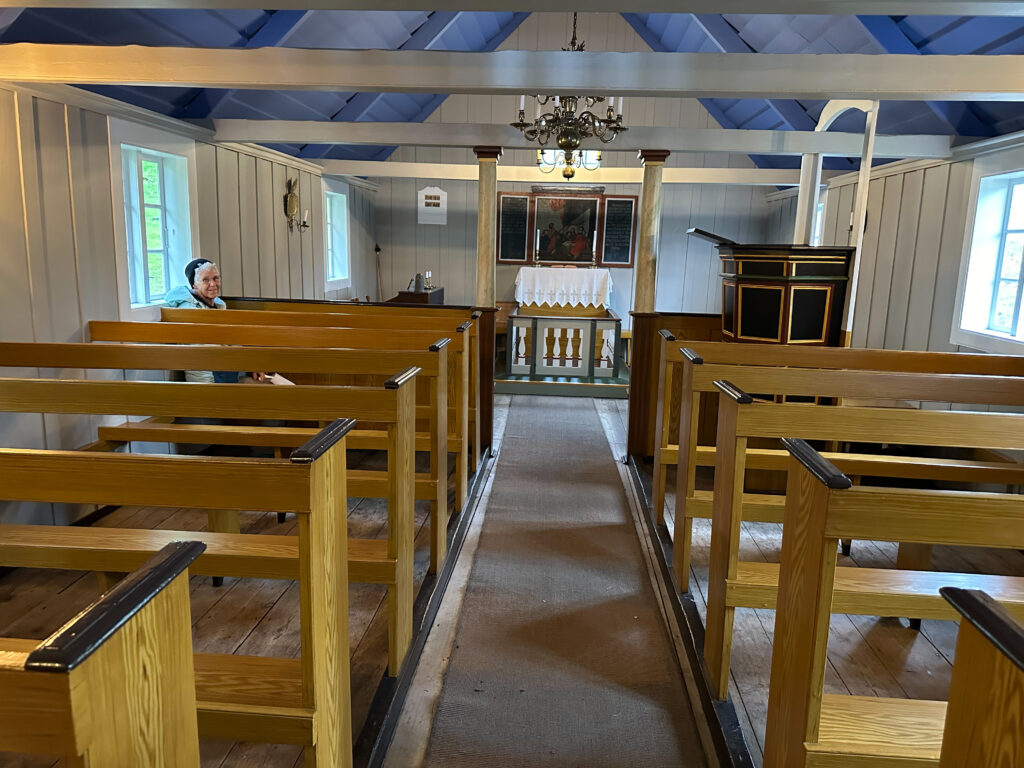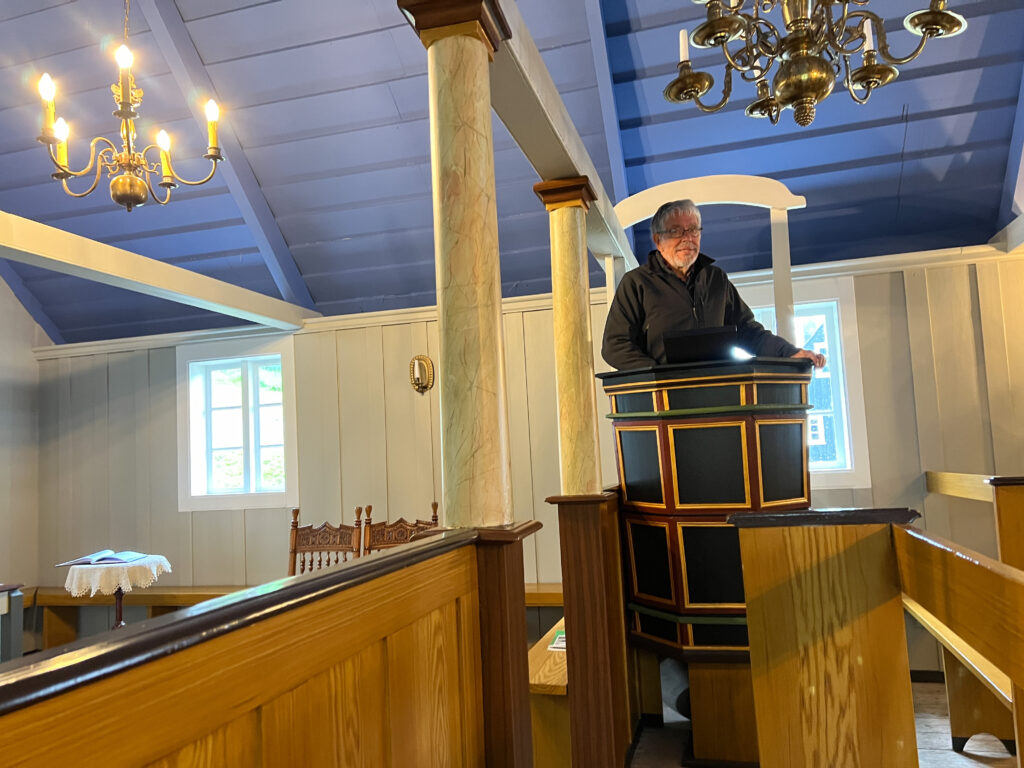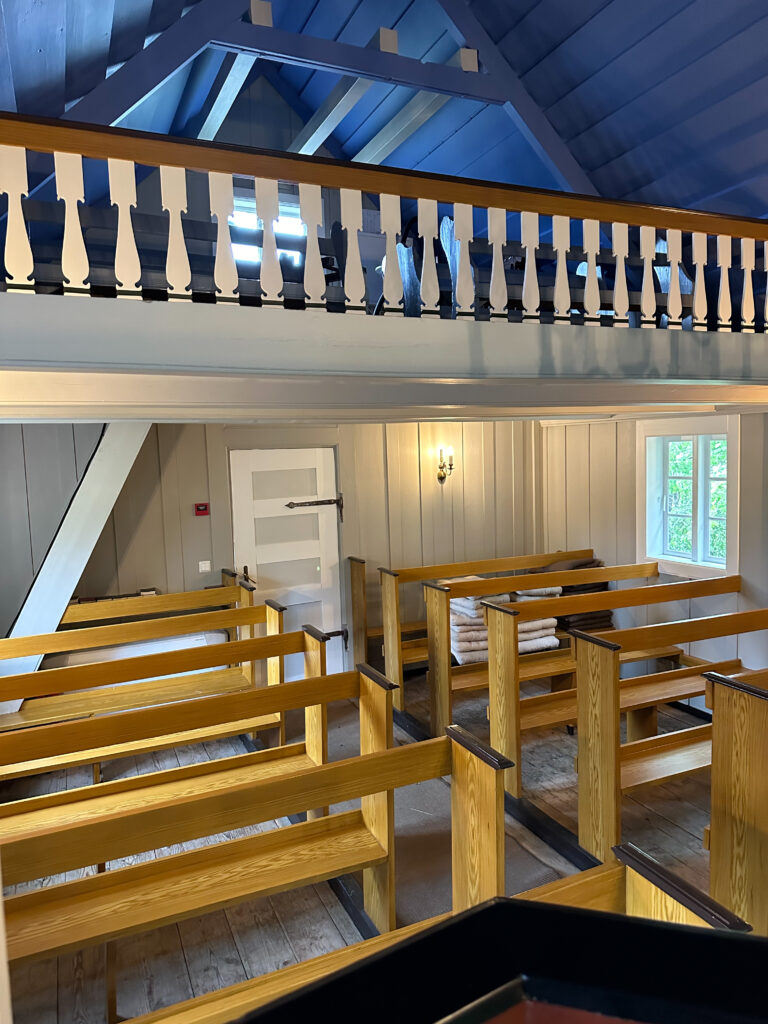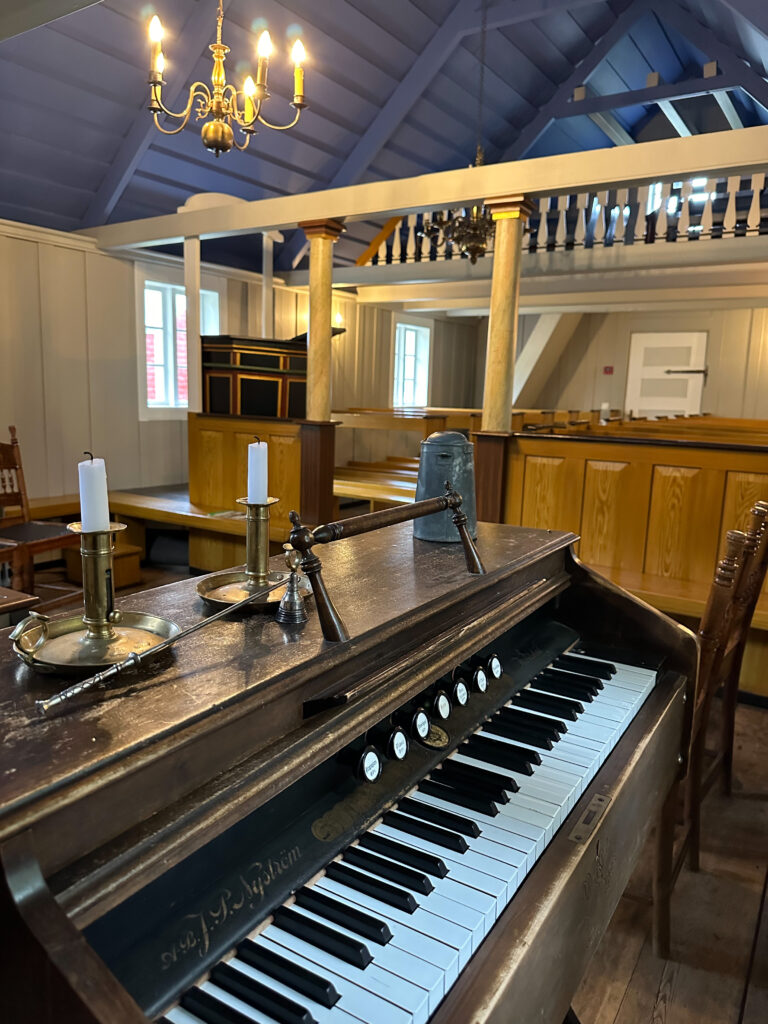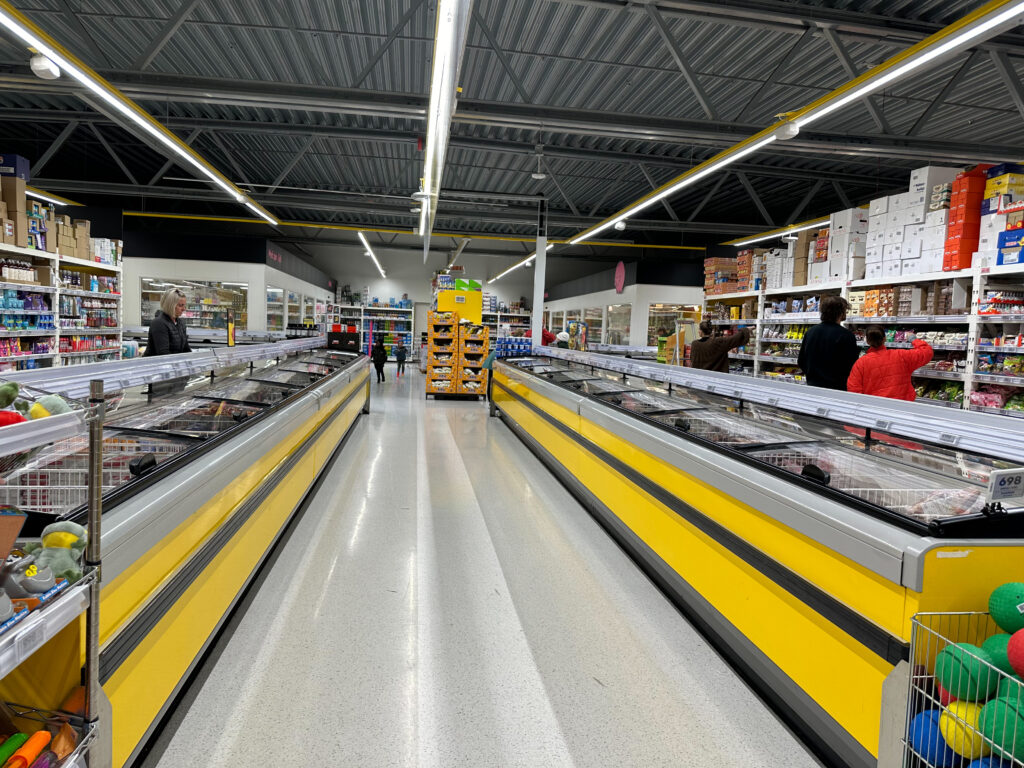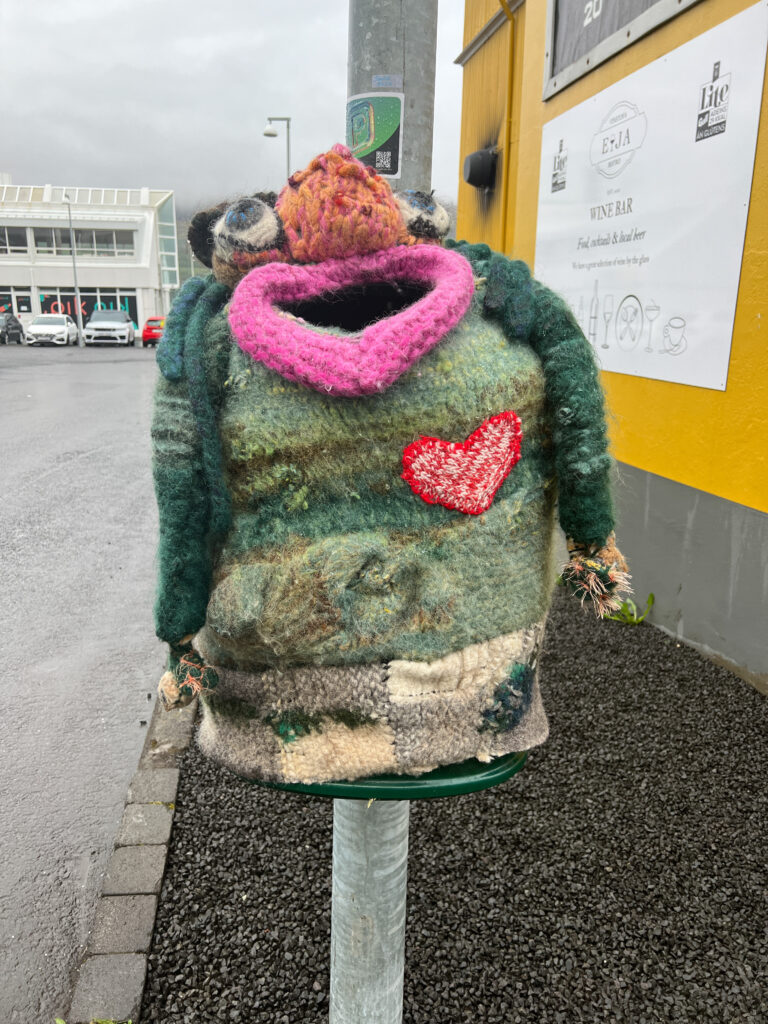Who in their right mind would choose a cold (44 degree), windy, rainy day to hike uphill to see a botanical garden? Is that person possessed? I’ll let you figure out which of us was that person.
Actually, necessity is sometimes the mother of questionable travel planning. See, this is our next-to-the-last day of our Iceland trip, so we’ve got to shoehorn in the last must-does. Today is the lousy day, tomorrow the nice day – forecast is for 59 degrees and partly sunny. That makes it one of the warmest days we’ve seen all trip long. So today we decided on “doing” Akureyri, which can be mostly an indoor activity. But not entirely; hence the botanical garden.
We had a lazy morning, not turning out until 9:30 or so. I moved the car out of a zone where parking fees began at 10 and we walked down our street to a nice, up-scale Dunkin’ for breakfast. Sweet rolls and hot chocolate with coffee.
Around the corner is the Akureyri Art Museum, indoors, so that was first on our agenda. It was a great collection of Icelandic and Arctic Circle-ish artists whose Is This North collection was part of the Reykjavik Art Festival we saw way back week before last. As far as I could tell, every single artist shown there is still alive, most young enough to be our kids and some our grandkids. Nary an Old Master and hardly a daub of oil.
I take that back; there was an exhibit of Marcel Duchamp, the French/American artist/chess player. Actually, it was part of an exhibit, put together by living folks, titled Stranded – W(h)ale a Remake Portfolio – More Than This, Even. It has to do somehow with whales. I’ll let you know how when I figure it out. But it was an amusing and interesting collection of items from the first half of the twentieth century.
Then, rain, cold, wind notwithstanding I led the way up the hill to the Botanic Garden, overlooking the fjord and downtown. Akureyri is really quite nice with neat, Icelandic houses. Granted we were in an upscale neighborhood, but the other areas we drove through later were all very nice. Neat, clean and well maintained. Our Airbnb being an exception.
The gardens featured, of course, Arctic and Icelandic flora. We’ve seen many of the Icelandic flowers on our travels. The garden, however, includes plants from all over the world, the colder climates anyway. The biggest tree we’ve seen in our travels here was a cottonwood imported from Alaska. Cottonwoods are apparently quite abundant in Akureyri. Some of the other species aren’t quite so adaptable to near-Arctic conditions and have to be planted as annuals.
On the way down the hill we stopped at a quaint old house in the middle of nowhere but literally a stone’s throw from our house. It was the home of a man, a Lutheran priest, author, poet and advocate for the disadvantaged, such as women. His wife was equally active. After the last remaining daughter died the house was turned into a museum displaying original furnishings of the early 1900s.
Enough of that; into the car for some exploration.
First, the Hof concert hall. Somewhat of a disappointment in that there is not performance scheduled this weekend and for the foreseeable future. The Akureyri Symphony’s season begins in September. We couldn’t even peek into the concert hall to compare it to the Harpa and the Sydney Opera House.
We had a particular interest because this is where Sage Lewis recorded his orchestral work during Covid. He piggybacked on another recording session, getting a cut rate for two hours of recording time for a 30-minute piece, the orchestra sight reading his composition. The Iceland government kicked in as part of their “Record in Iceland” initiative. Later, in other places, he added other musical and vocal performances that were combined into the finished work. We’ve heard it and it’s an amazing expression of Icelandic scenery. I may be overstepping my knowledge base, but I would term it a tone poem. We listened to it while traversing the volcanic fields of southern Iceland.
Our next stop was the Akureyri Museum but we took the scenic route (and no, I didn’t get lost) along the waterfront, seeing an interesting collection of what I would assume to be fishing craft, although it’s hard to figure out where they dangle their lines to catch the Arctic char and wolffish we’ve been enjoying.
Then the Akureyri Museum which, like the Art Museum, was very much locally oriented. There was a very interesting exhibit of old maps, dating from the 16th century an later. Many were Danish, since the Danes ruled the place and the Icelanders had little wherewithal to do any mapping of their own. In fact, there was one map done in the late 1800s by an Icelander who had to beg and borrow surveying equipment from the Danes. The maps, inaccurate as they might have been, are works of art.
The other exhibits focused on life in Akureyri way back as far as rock and roll bands from the 1960s, home life of that era, etc. There was an old wooden stave church and the boyhood home of Jón Stefán Sveinsson (1857-1944), aka Nonna. He was born near Akureyri but after his father died at age 11, his mother didn’t have the wherewithal to care for him. A French nobleman offered to have him educated in Europe so, at the age of 12, he left his mother, never to see her again. He eventually became a Roman Catholic priest, a big leap for an Icelandic Lutheran. He lived in many places around the world and became the author of 12 children’s books that have become much loved favorites for many generations. Nonna returned to Iceland only twice, briefly, once to be named an honorary citizen of Akureyri. He died in a bunker in Germany in 1944.
So enough of the museum scene. One more stop: our favorite grocery store, Bonus (we’ve shopped at two), for skyr (Icelandic yogurt) and rolls for two more breakfasts before we head home.
If dinner last night was 169 feet from our house, tonight’s was 269 feet. Fish and chips for me and grilled lamb chops for Judy. The walk home, though short, was in the same cold windy weather. The warmth of the Airbnb was most welcome.
Heating here and in most of Iceland is from geothermal water piped to everyone’s home for both tap water and household heat. We learned today that it wasn’t until the oil crisis of the 1970s that geothermal hot water became widespread. Judy likes the fact that hot and cold water flows almost instantaneously. Often, especially here in Akureyri, the water has a decided sulfurous taste and smell.
On the way back we found a figurine of one of Akureyri’s hidden people – elves – of which many Icelanders, and especially people from this area, are staunch believers.
Tomorrow, we’re headed north to Siglufjordur and on the way a 15-minute ferry ride to the island of Hrísey. And no, Sage didn’t tell us to go there. We figured it out all by ourselves.
Then home on Sunday.


